Kōlea-R-Us: Nome, 2024
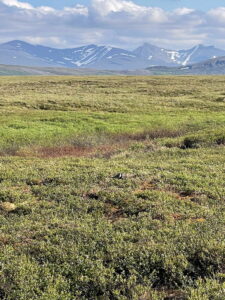 A kōlea on the Nome tundra. ©Susan Scott
A kōlea on the Nome tundra. ©Susan Scott
July 8, 2024
Hawaiʻi walks are always good, but not quite as good from May through July, when our kōlea are in Alaska. We plover lovers feel the birds’ absence, and often wonder how they’re doing with their summer job of chick-rearing.
Some of us went to see for ourselves From June 24-28, the Hawaiʻi Audubon Society sponsored its second Kōlea Quest trip to Nome. And once again, we had the privilege of accompanying world plover authority, Dr. O. Wally Johnson, and his two research associates from Anchorage. (Photo below. Wally, brown coat, in center.)
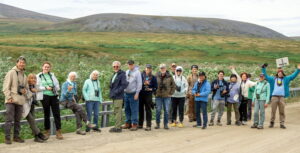 ©Laura Doucette
©Laura Doucette
For Hawaiʻi residents accustomed to friendly kōlea that prance around our backyards and eat scrambled eggs on our lanais, Alaska kōlea hold a surprise: While breeding, the birds view humans as predators, up there with foxes, ravens, jaegers, and all the other Arctic animals hunting for food. With predators on the prowl for nutritious eggs and chicks, the lives of plovers, and all ground-nesting birds on the tundra, are filled with life-and-death drama. Camouflage, hunkering down, and holding motionlessness are keys to survival, making finding even one kōlea nest a challenge.
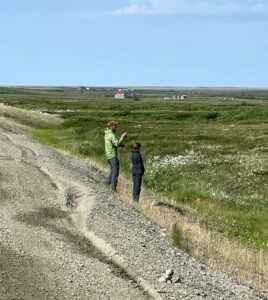 Wally’s long-time field workers, Paul and Nancy Brusseau, scouting for kōlea. ©Susan Scott
Wally’s long-time field workers, Paul and Nancy Brusseau, scouting for kōlea. ©Susan Scott
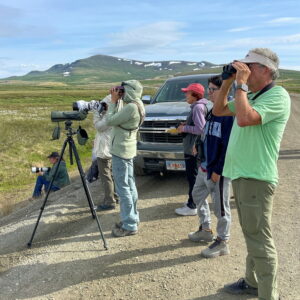 Members of our group looking for birds. ©Susan Scott
Members of our group looking for birds. ©Susan Scott
But we were there with the experts. Over several days, the experienced researchers found three plover nests with eggs. Photos below. (O.W. Johnson USGS research permit #20957.)
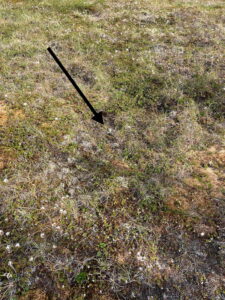 ©Susan Scott
©Susan Scott
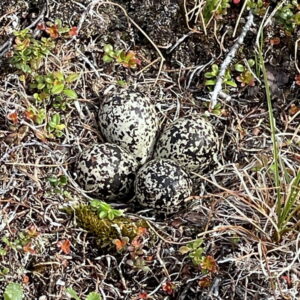 ©Susan Scott
©Susan Scott
And on our last day, one of those nests produced the thrill of a lifetime for kōlea fans: two new hatchings and one pipping (and peeping) egg. The first tiny hatchling was already running around the nest.
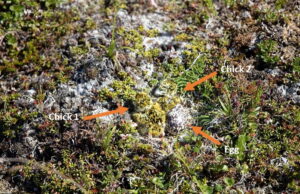 ©Laura Doucette
©Laura Doucette
Like chickens, kōlea parents don’t feed their offspring. As soon as hatchlings’ downy feathers are dry, the kids are out and about, foraging for insects and berries. Parents follow the best they can, warming and protecting the chicks as needed.
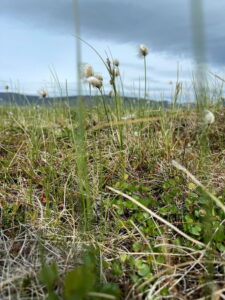 Wally posed this question: If we tall humans have a hard time finding a nest, how do little birds do it? This photo, taken by me on my belly, as Wally suggested, is a kōlea-eye view of the tundra. ©Susan Scott
Wally posed this question: If we tall humans have a hard time finding a nest, how do little birds do it? This photo, taken by me on my belly, as Wally suggested, is a kōlea-eye view of the tundra. ©Susan Scott
In this bug-filled, light-all-night environment, chicks grow up fast. In one month, baby plovers can fly. Parents fly south in August, leaving their offspring on the tundra to fatten up as long as food is available. That can last into October, or even November, depending on weather. When snow falls, the summer’s chicks migrate to warm wintering grounds, instinct being their only guide.
This was the Hawaiʻi Audubon Society’s second trip to Nome with Wally, his study partners, …
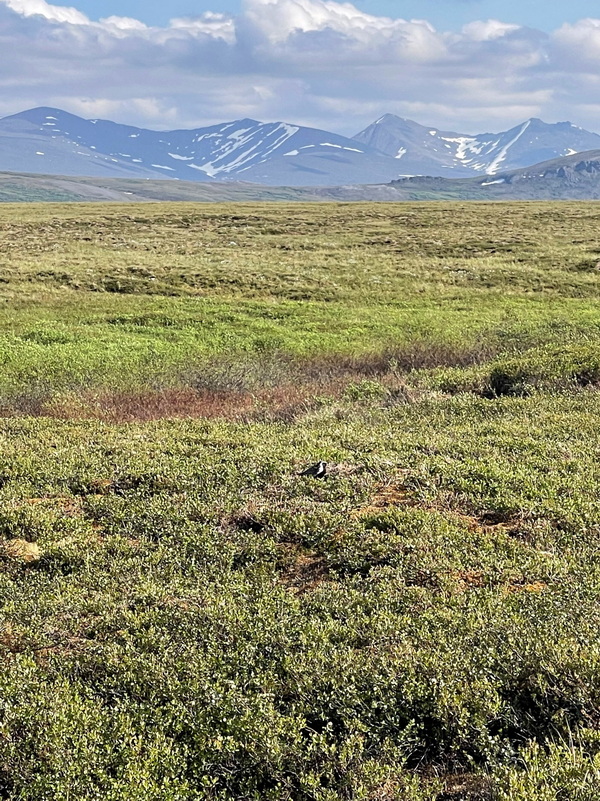

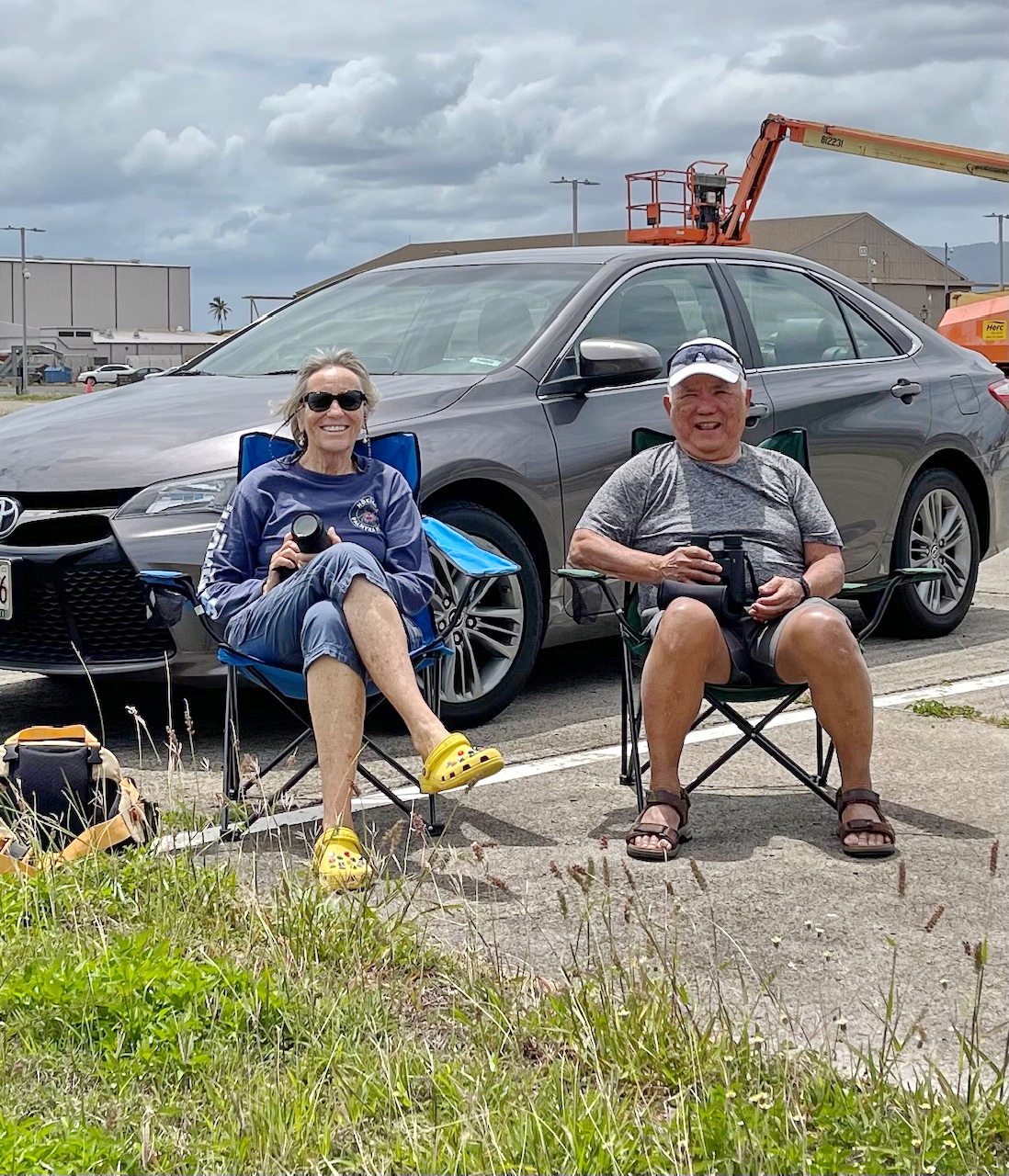 Besides learning new things, kōlea help us to make new friends. Plover fan Roger Kobayashi (right) hosts me several times a year at Ford Island (a contractor working there took this photo of us) and Tripler Army Medical Center to watch kōlea gather. On Saturday, only 6 birds remained, a gradual decrease from a high of 110.
Besides learning new things, kōlea help us to make new friends. Plover fan Roger Kobayashi (right) hosts me several times a year at Ford Island (a contractor working there took this photo of us) and Tripler Army Medical Center to watch kōlea gather. On Saturday, only 6 birds remained, a gradual decrease from a high of 110.  This kōlea learned to eat mealworms from the home owner’s hand. The bird returned to the man’s Kailua yard for 15 years.
This kōlea learned to eat mealworms from the home owner’s hand. The bird returned to the man’s Kailua yard for 15 years. 
 If you feed your bird, please offer high protein food, such as worms or scrambled egg. This is my Jake, at least eight years old, eating his egg. His last day on my lanai was April 20th.
If you feed your bird, please offer high protein food, such as worms or scrambled egg. This is my Jake, at least eight years old, eating his egg. His last day on my lanai was April 20th. 

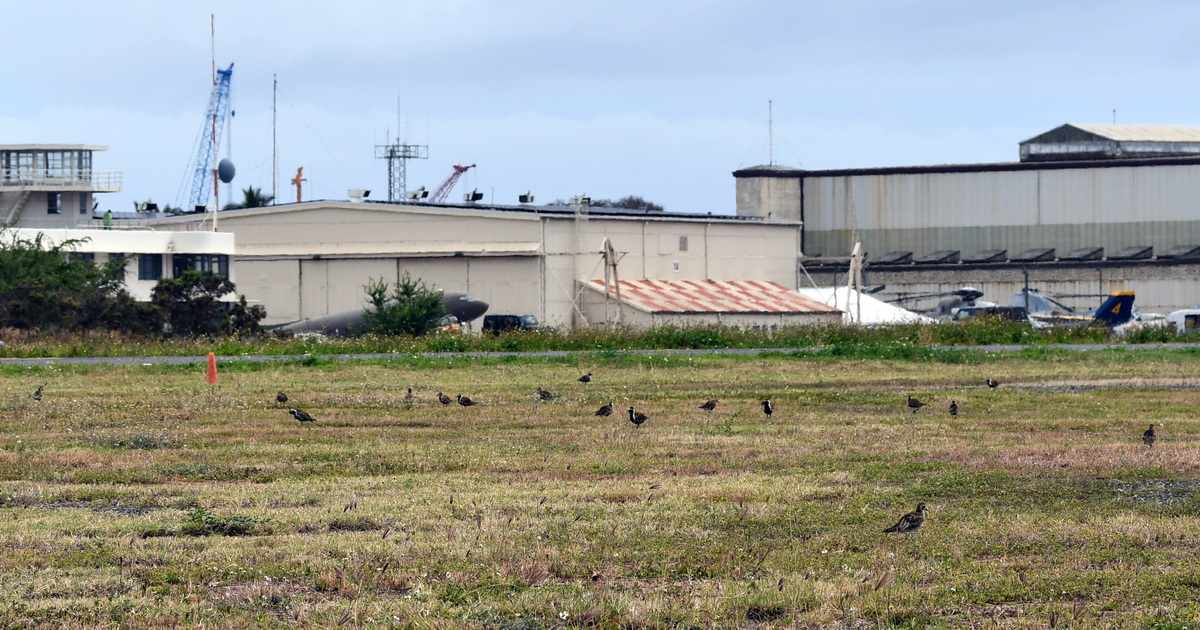
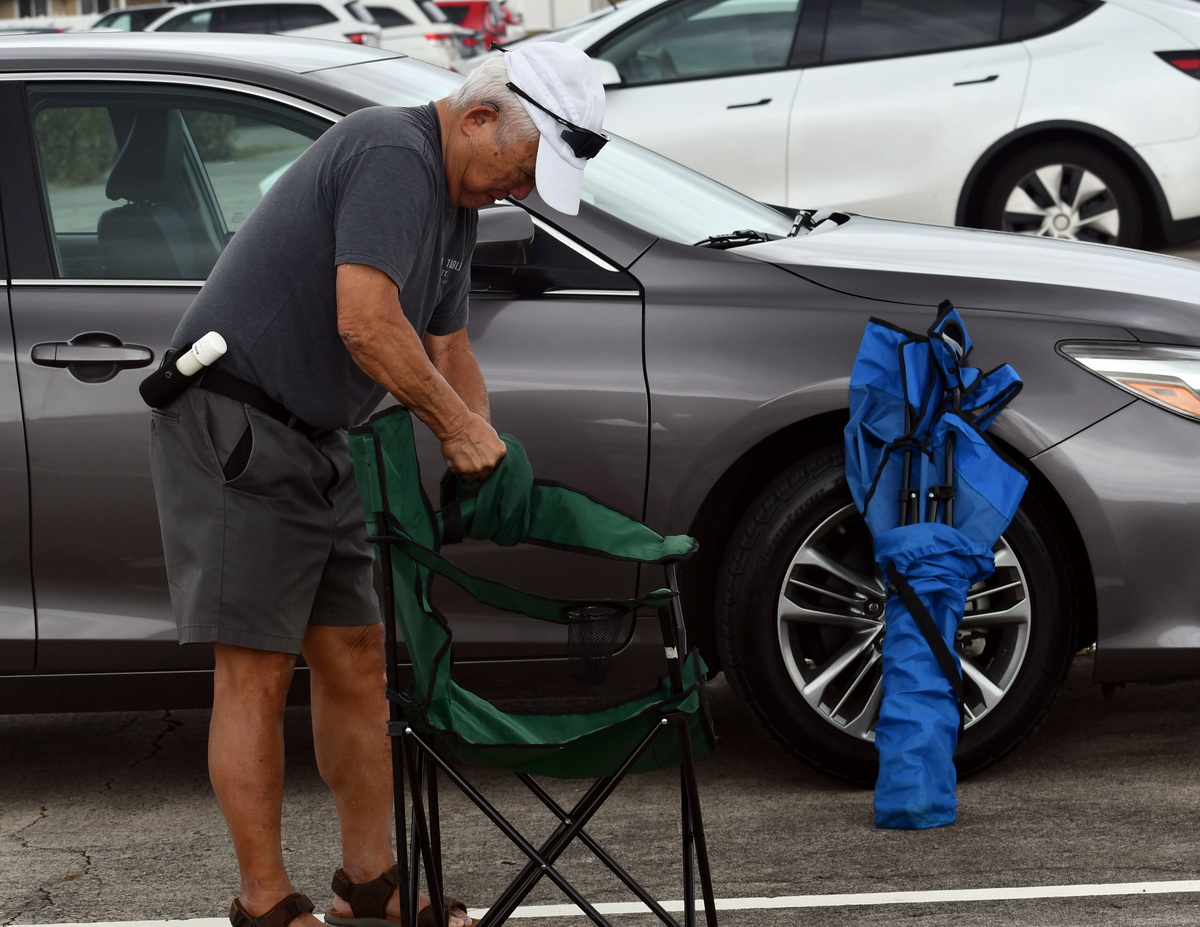 Roger Kobayashi unfolds chairs for our kōlea watch. ©Susan Scott
Roger Kobayashi unfolds chairs for our kōlea watch. ©Susan Scott 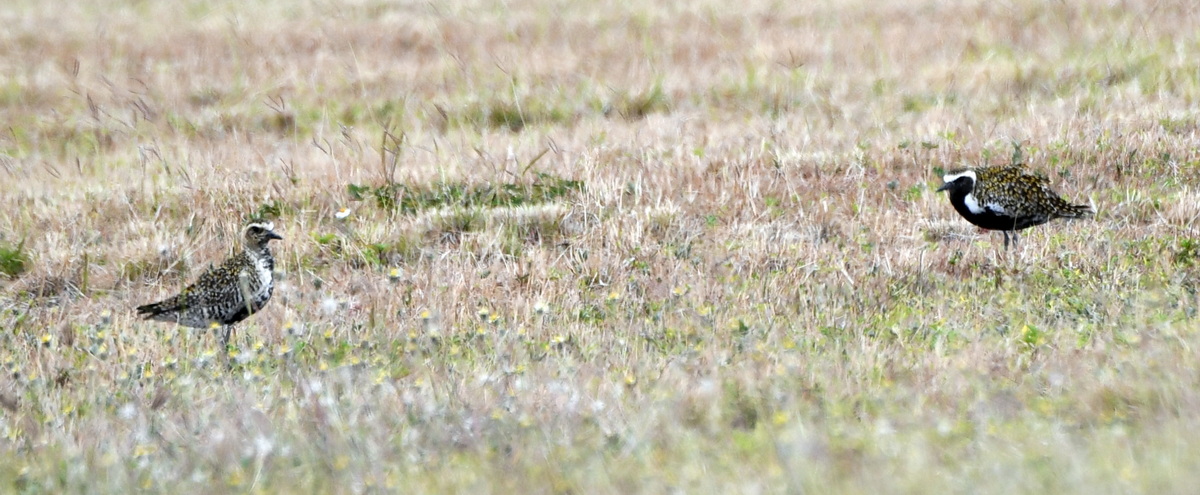
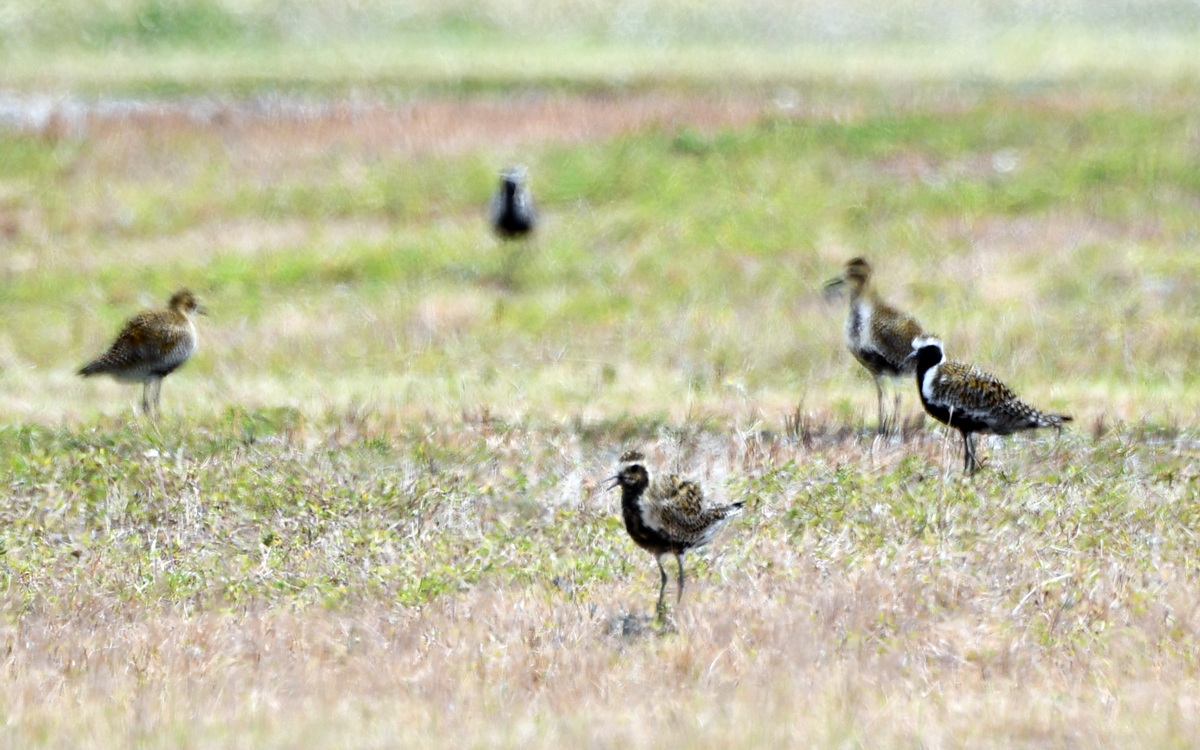 From our distance, the male/female mix seemed about equal. ©Susan Scott
From our distance, the male/female mix seemed about equal. ©Susan Scott  The black dots in this Tripler Army Medical Center (pink building) field are kōlea. ©Susan Scott
The black dots in this Tripler Army Medical Center (pink building) field are kōlea. ©Susan Scott 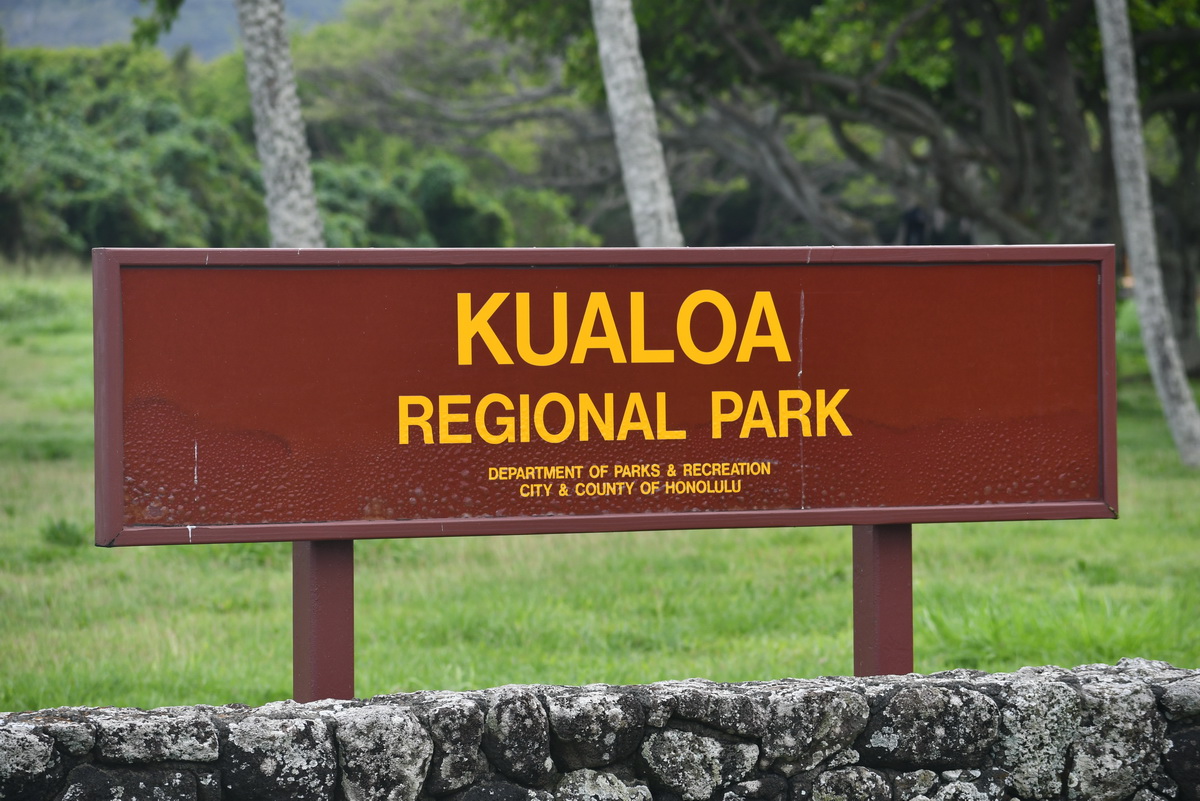 After Roger contacted me with the gathering news, I drove to Kualoa Park to see if kōlea are gathering there. They were not. I’ll keep checking. ©Susan Scott
After Roger contacted me with the gathering news, I drove to Kualoa Park to see if kōlea are gathering there. They were not. I’ll keep checking. ©Susan Scott 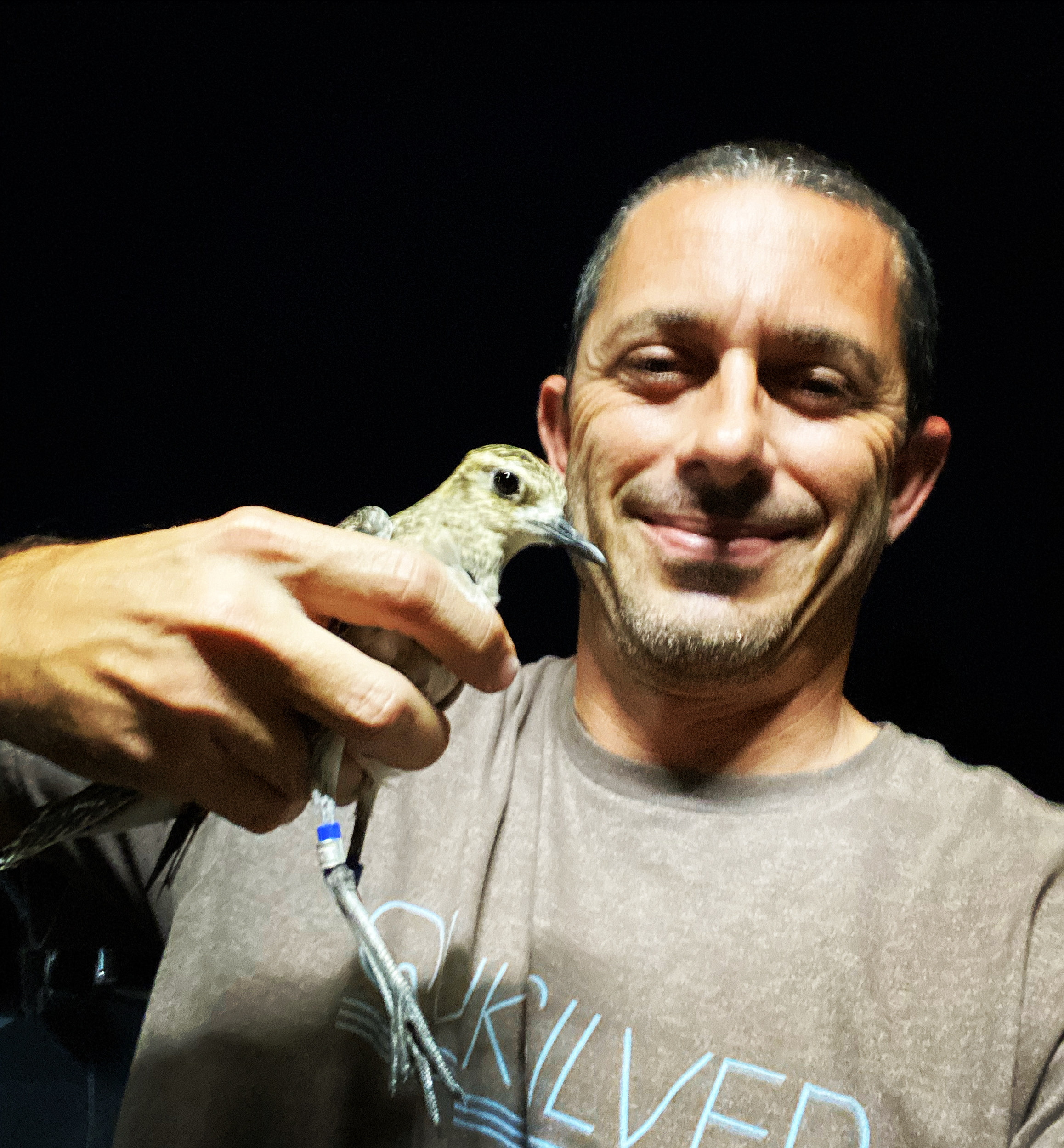
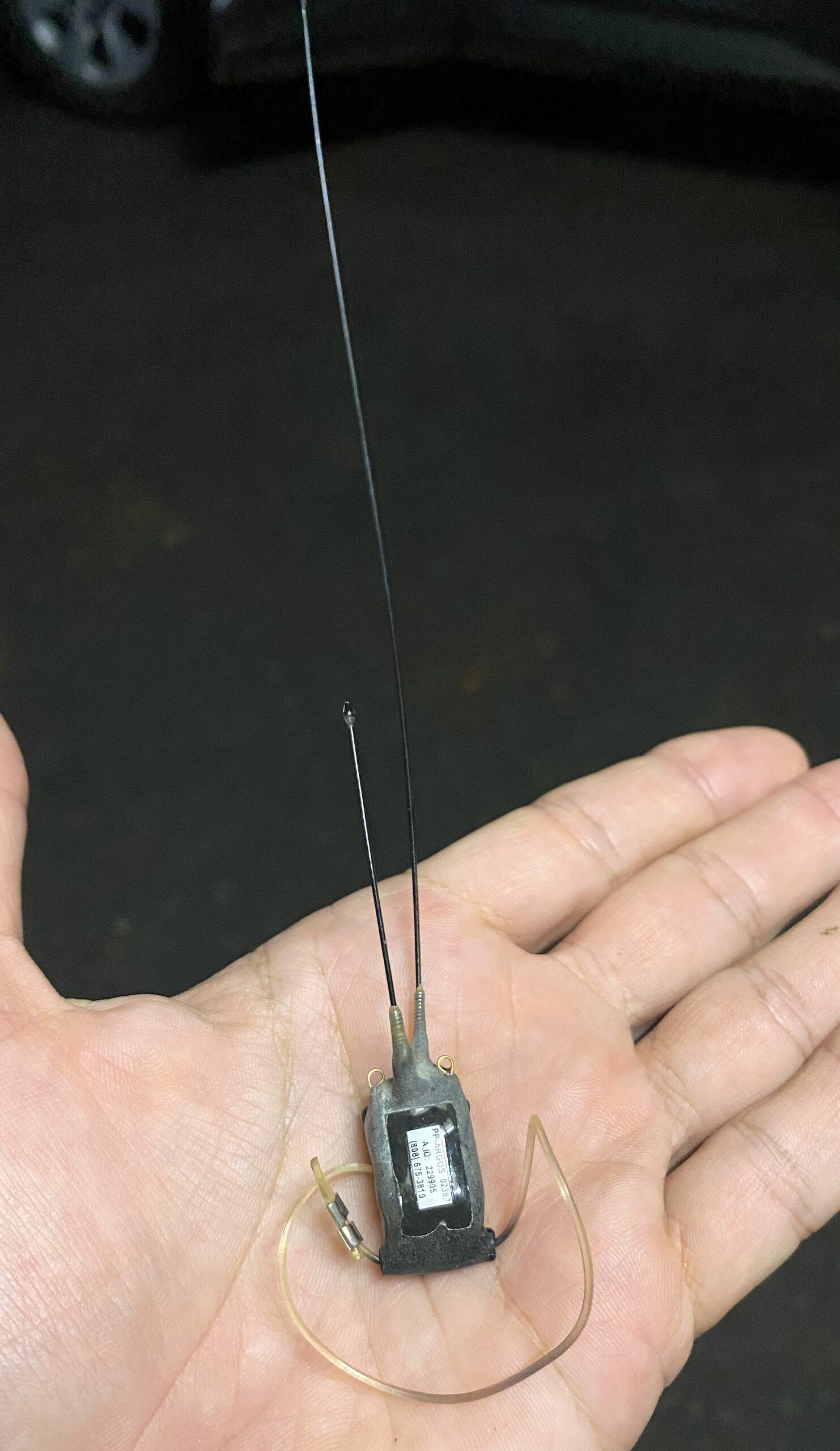 Unfortunately, the batteries in these satellite-signaling devices only have enough charge for one season. Total weight of the device and harness is a bit less than one U.S. nickle. Wally Johnson photo
Unfortunately, the batteries in these satellite-signaling devices only have enough charge for one season. Total weight of the device and harness is a bit less than one U.S. nickle. Wally Johnson photo 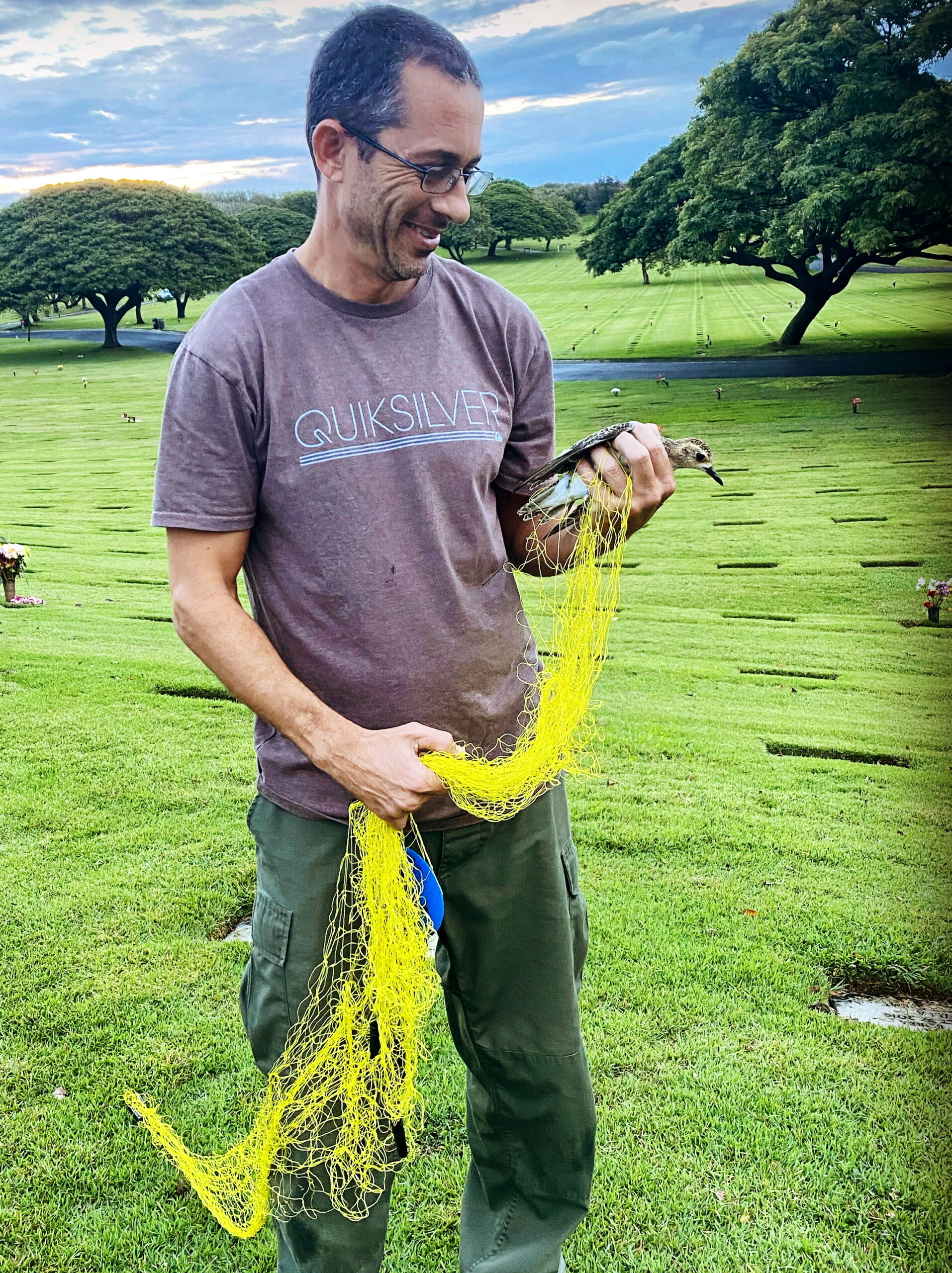 Josh with his hard-earned prize kōlea, November 29, 2023. Wally Johnson photo
Josh with his hard-earned prize kōlea, November 29, 2023. Wally Johnson photo 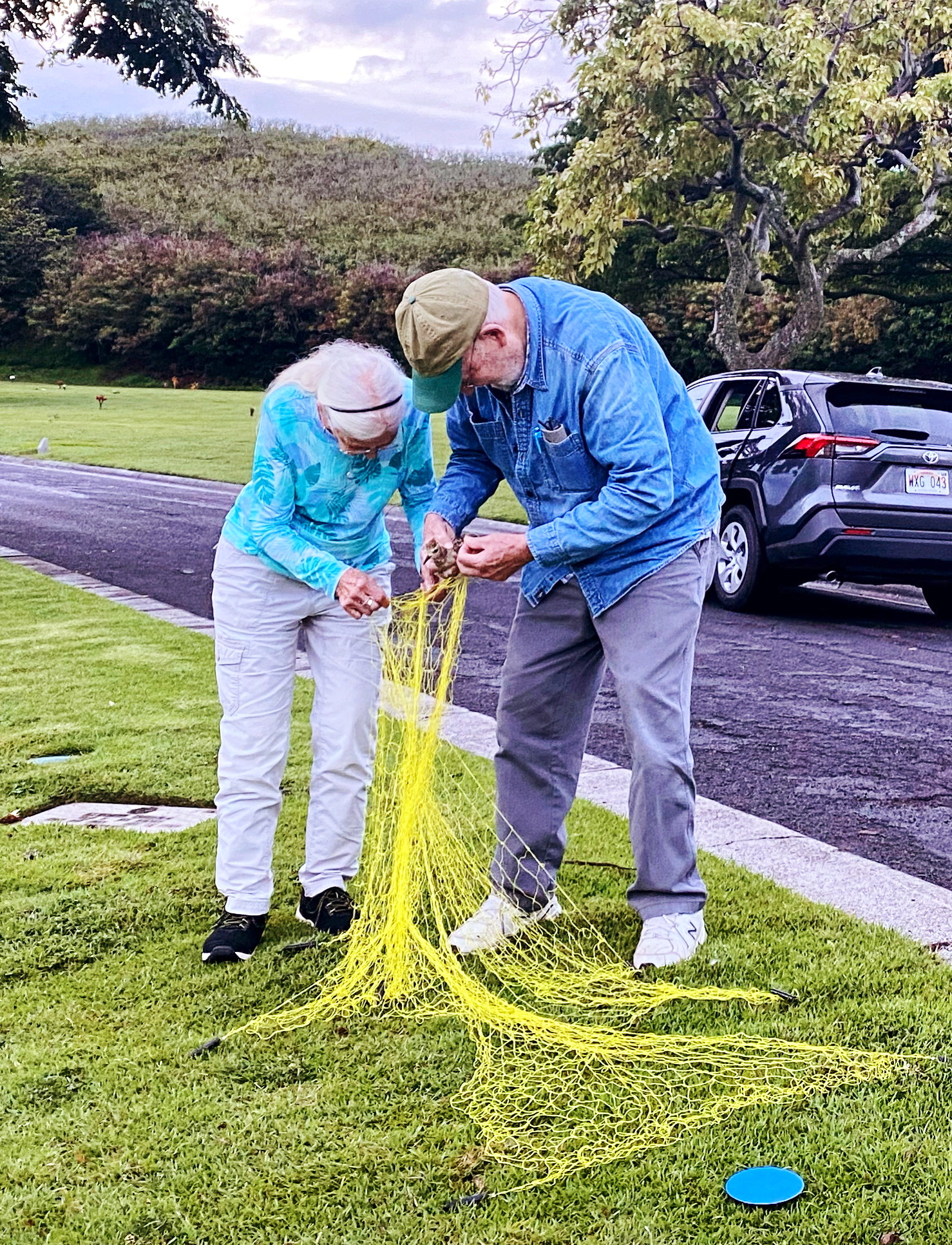 Wally Johnson and partner Diane Smith untangle the kōlea from the net. Josh Fisher photo
Wally Johnson and partner Diane Smith untangle the kōlea from the net. Josh Fisher photo 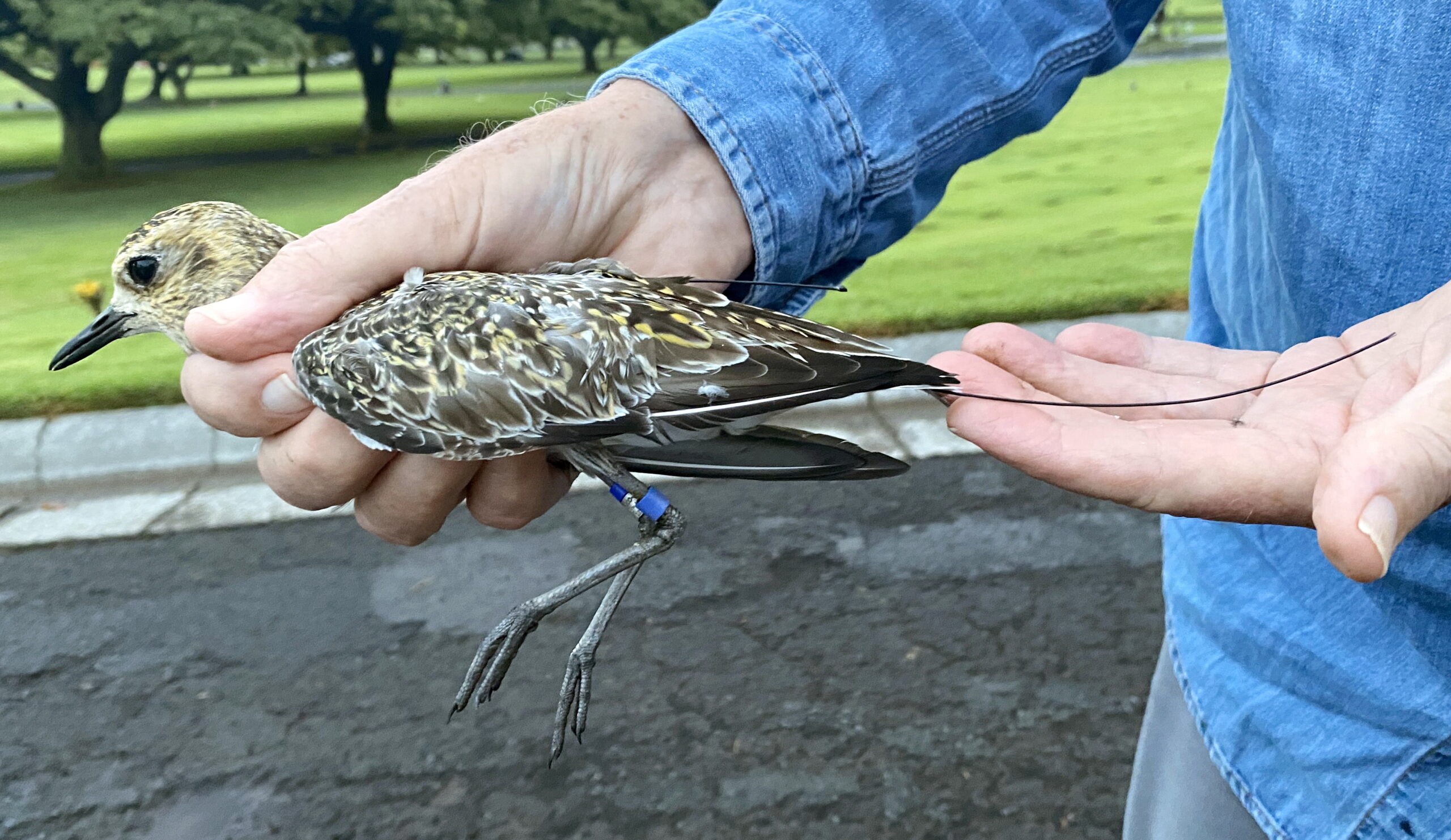
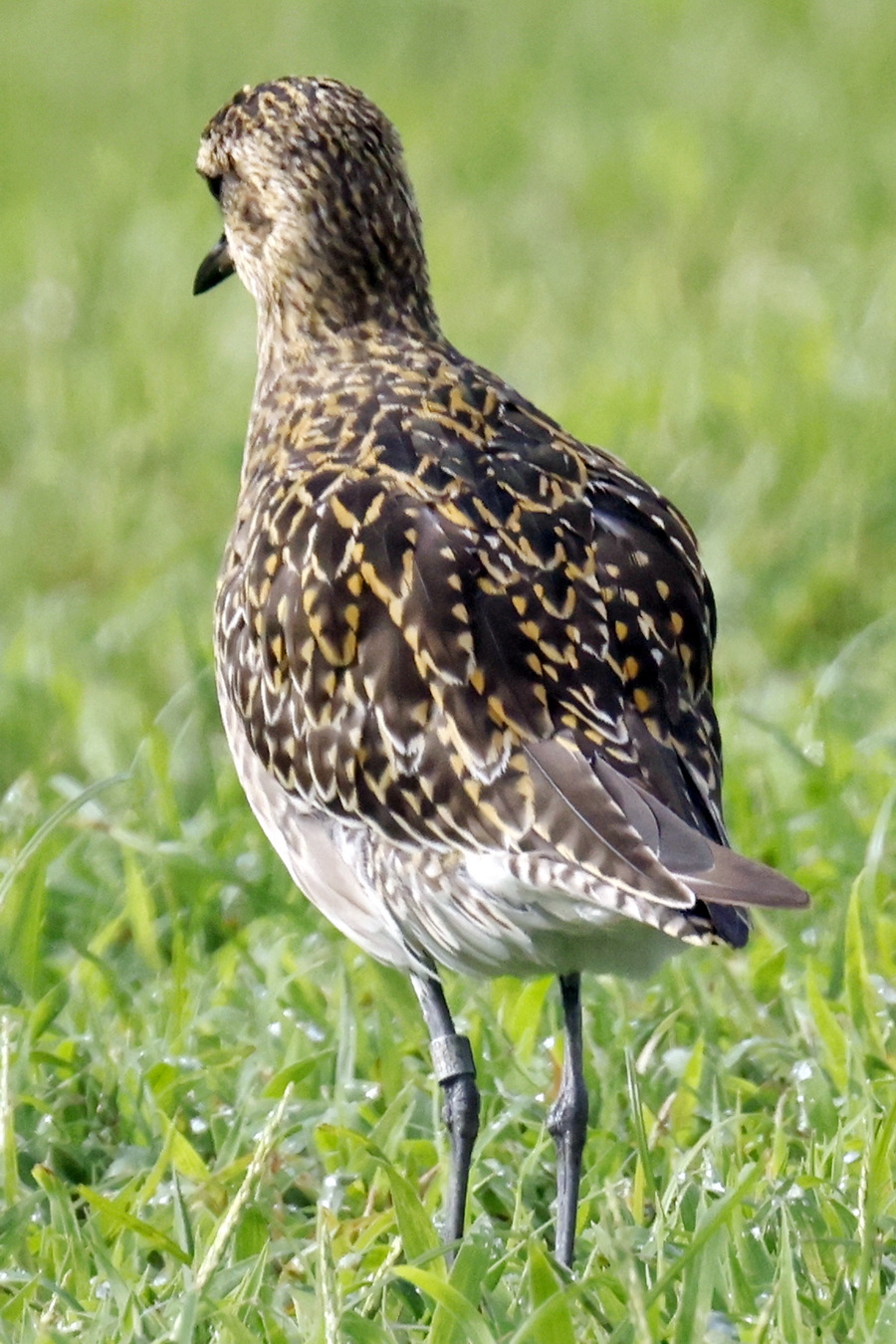 Mr. X with his 21-year-old aluminum band. Tom Fake photo
Mr. X with his 21-year-old aluminum band. Tom Fake photo 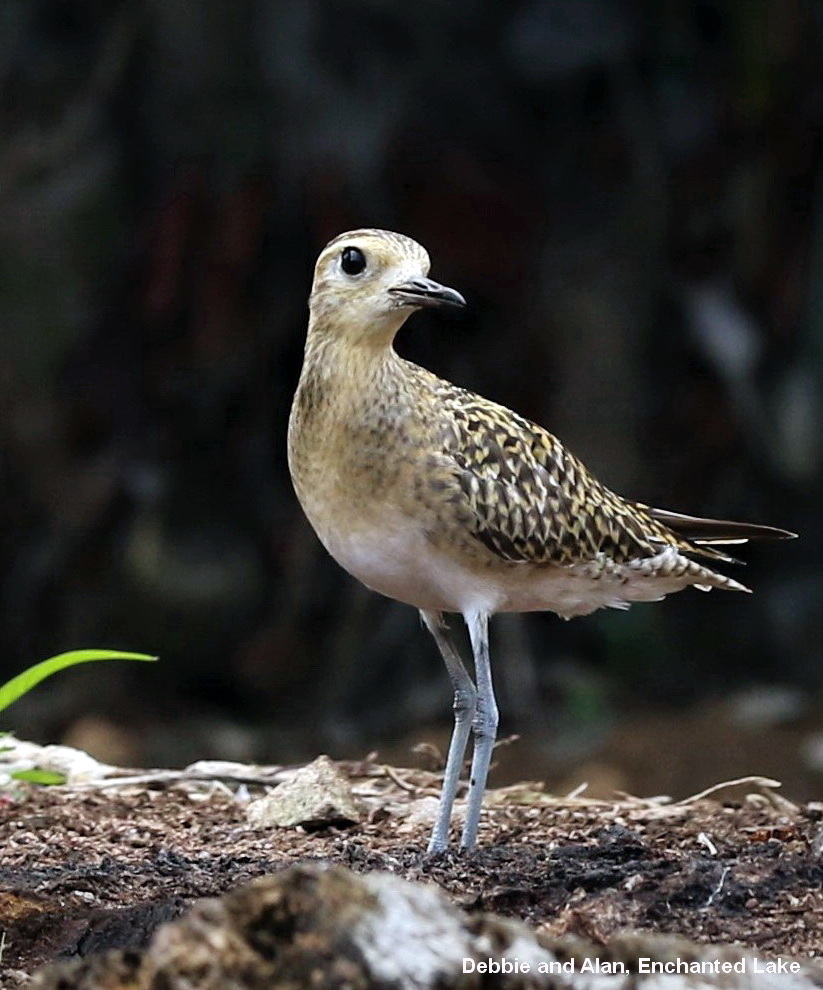
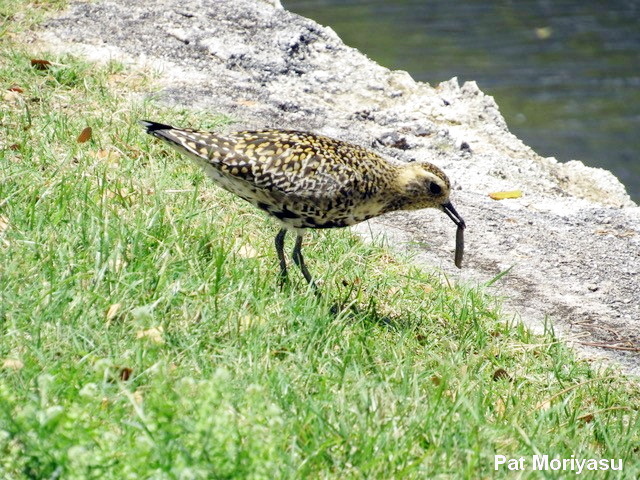 Once a plover survives its first year in Hawaiʻi, the bird returns to that precise place year after year. Foraging patches range in size from about one acre to a football field, depending on the abundance of crawly things in the patch. Kolea eat anything they can catch and swallow, including slugs (above), cockroaches, centipedes, and spiders. ©Pat Moriyasu
Once a plover survives its first year in Hawaiʻi, the bird returns to that precise place year after year. Foraging patches range in size from about one acre to a football field, depending on the abundance of crawly things in the patch. Kolea eat anything they can catch and swallow, including slugs (above), cockroaches, centipedes, and spiders. ©Pat Moriyasu  When a disturbance passes, a plover returns to its chosen patch, such as this bird at popular Ko Olina Lagoon 3, January 2023. ©Susan Scott
When a disturbance passes, a plover returns to its chosen patch, such as this bird at popular Ko Olina Lagoon 3, January 2023. ©Susan Scott 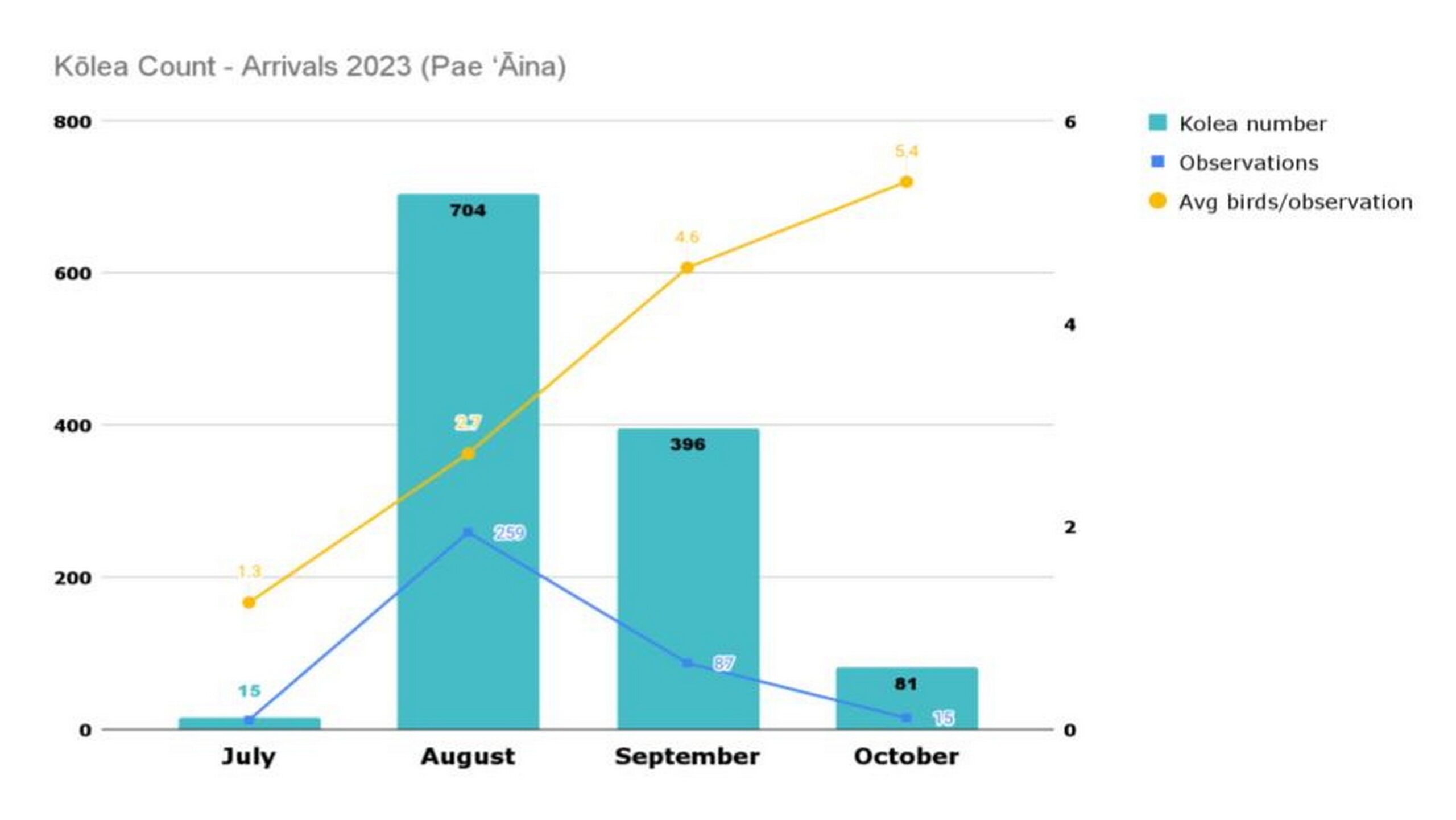
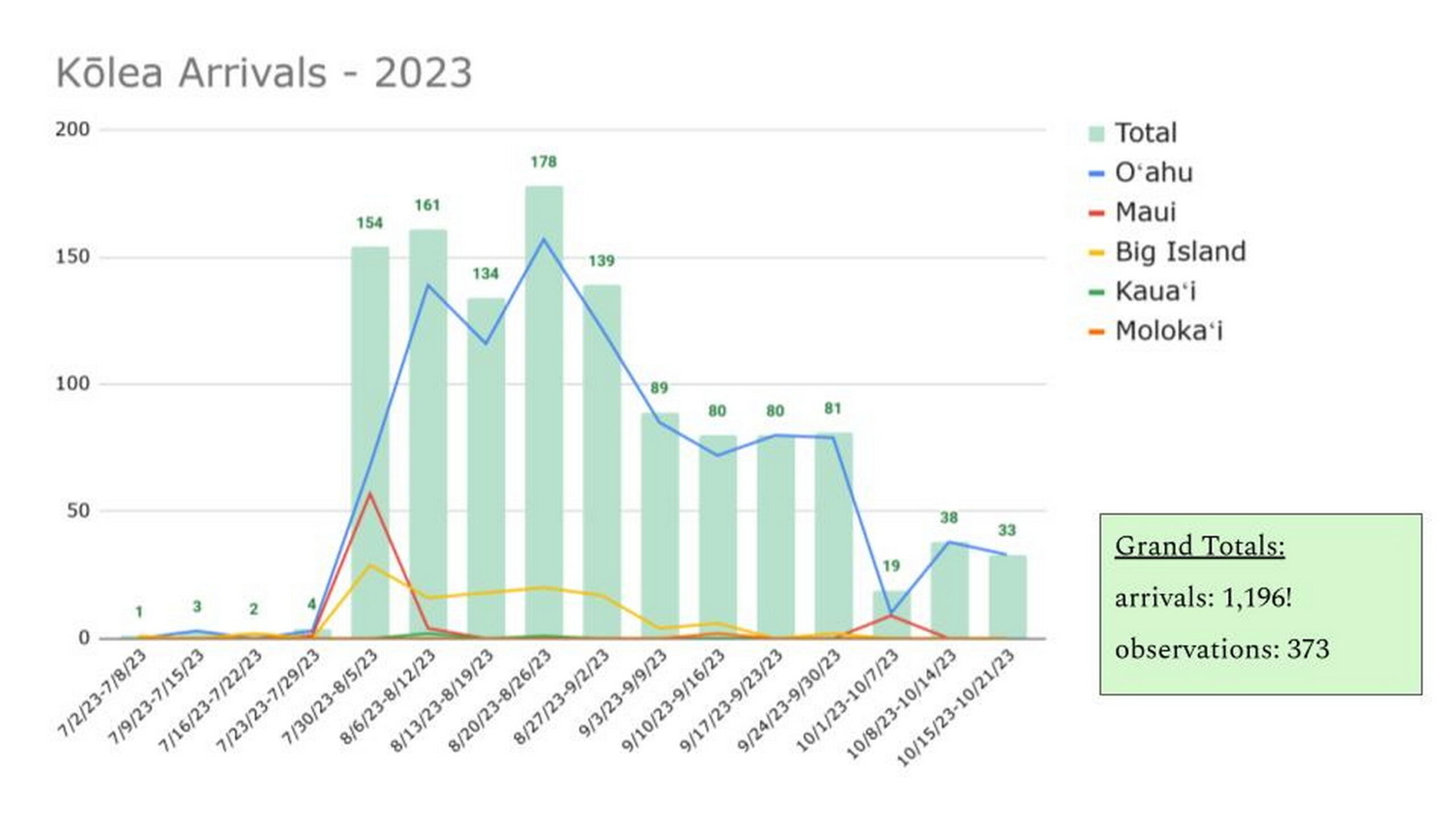
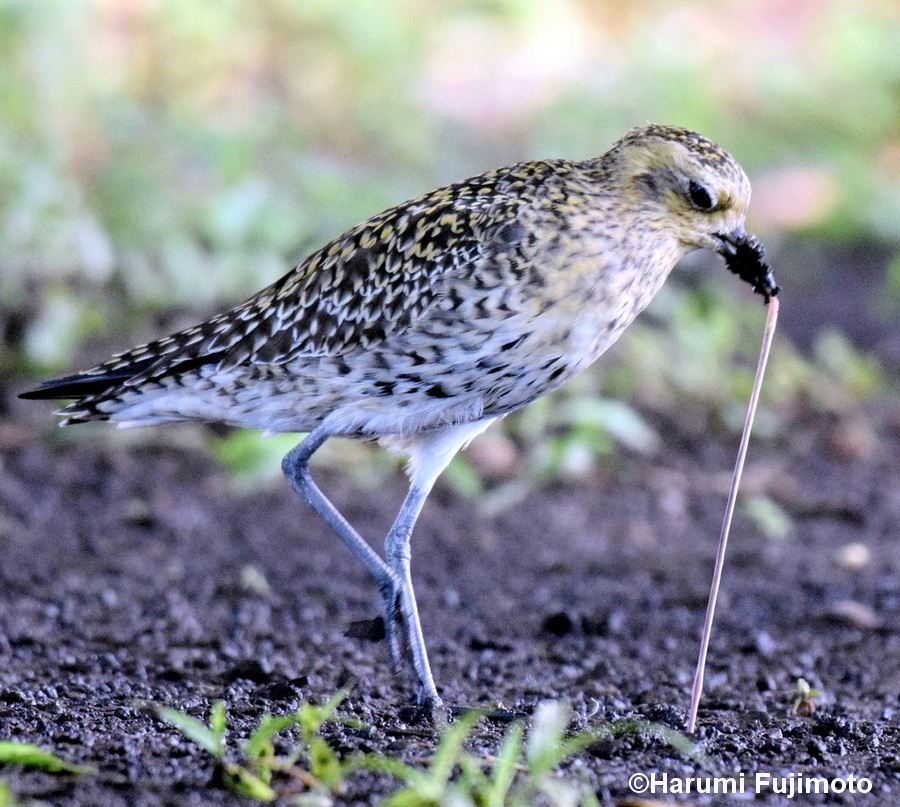
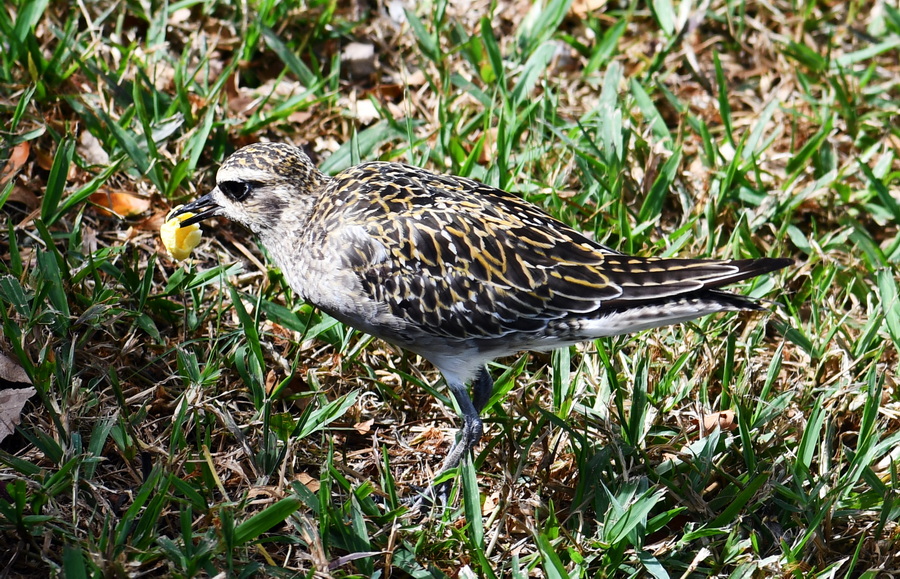 Jake arrived August 11th this year. Here he is this morning eating scrambled egg, rich in fat and protein, and just what he needs. ©Susan Scott
Jake arrived August 11th this year. Here he is this morning eating scrambled egg, rich in fat and protein, and just what he needs. ©Susan Scott 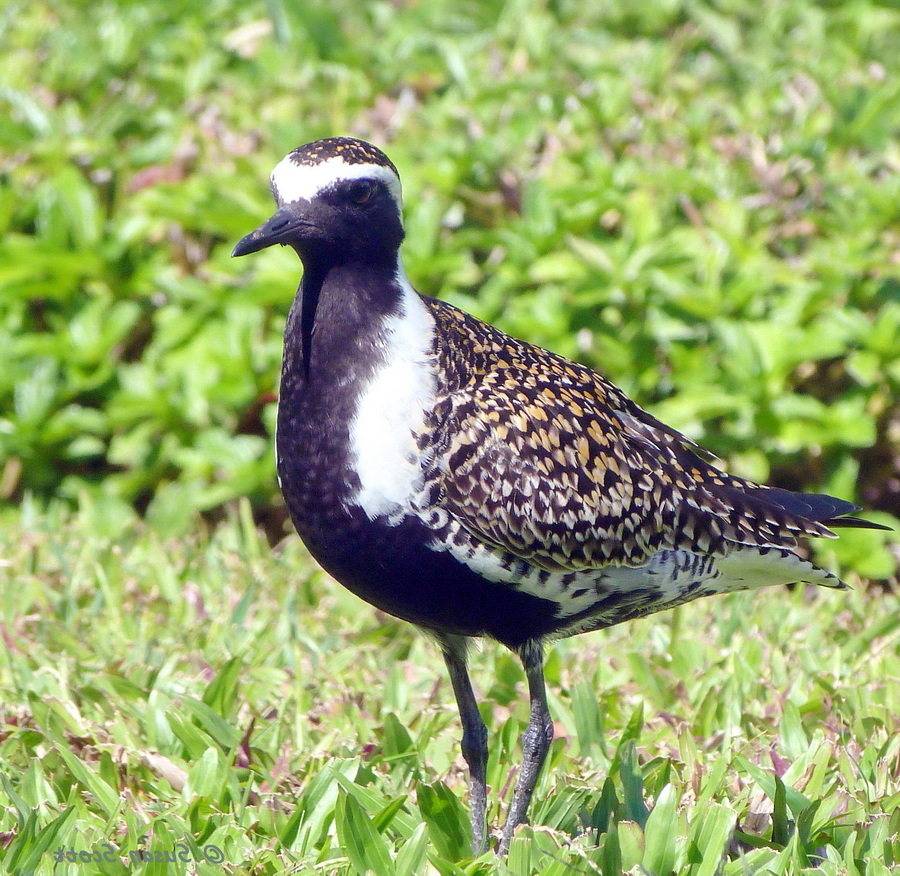 Our Jake, April 25th, plump and dressed to the nines. ©Susan Scott
Our Jake, April 25th, plump and dressed to the nines. ©Susan Scott 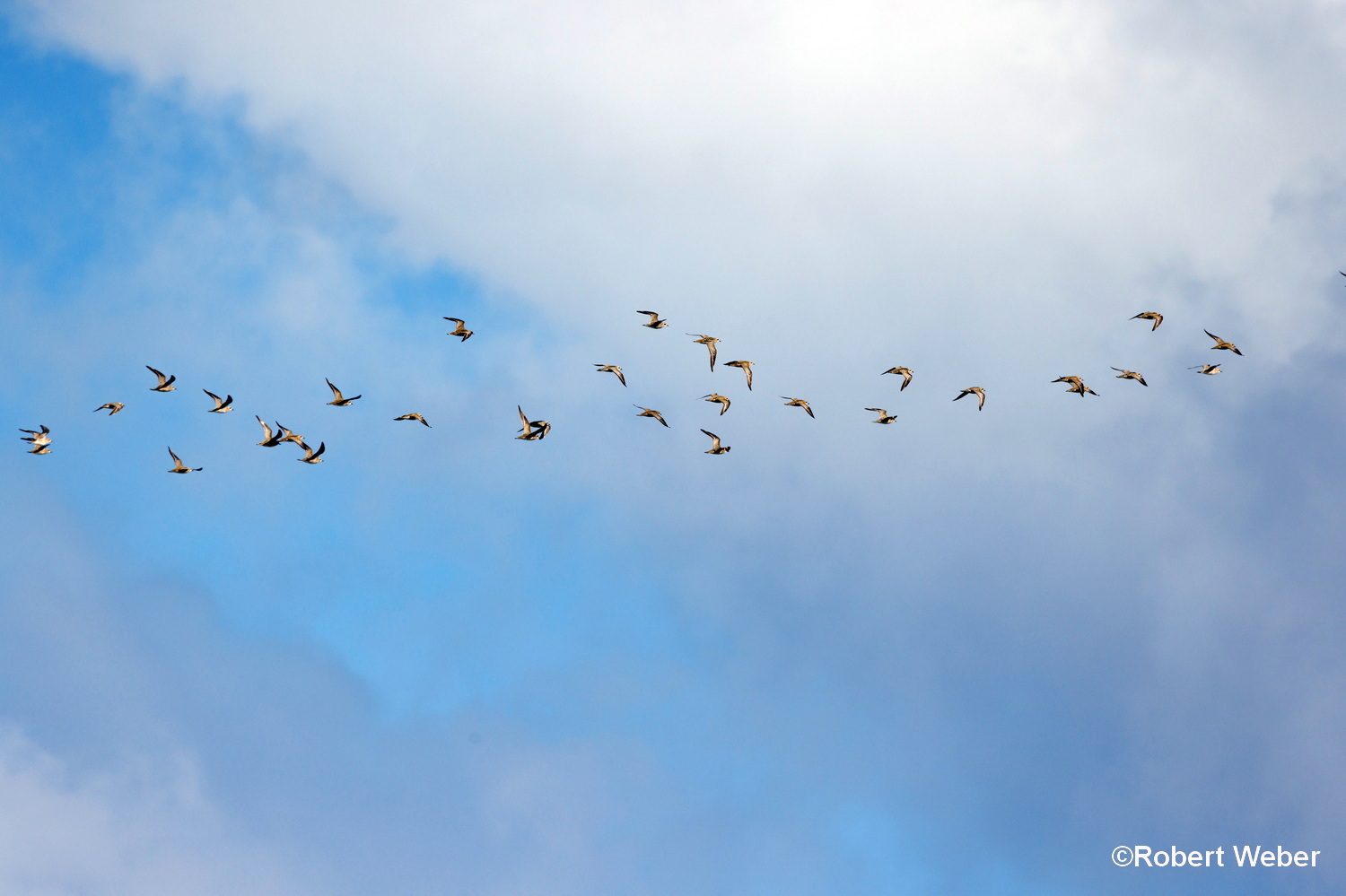 Photographer and kōlea fan, Robert Weber, shared this photo he took of a kōlea flock near Kahuku on October 13. These birds may be summer offspring that made it from Alaska to Hawaiʻi. Plover youngsters, have no adult guidance. Navigation is by instinct.
Photographer and kōlea fan, Robert Weber, shared this photo he took of a kōlea flock near Kahuku on October 13. These birds may be summer offspring that made it from Alaska to Hawaiʻi. Plover youngsters, have no adult guidance. Navigation is by instinct. 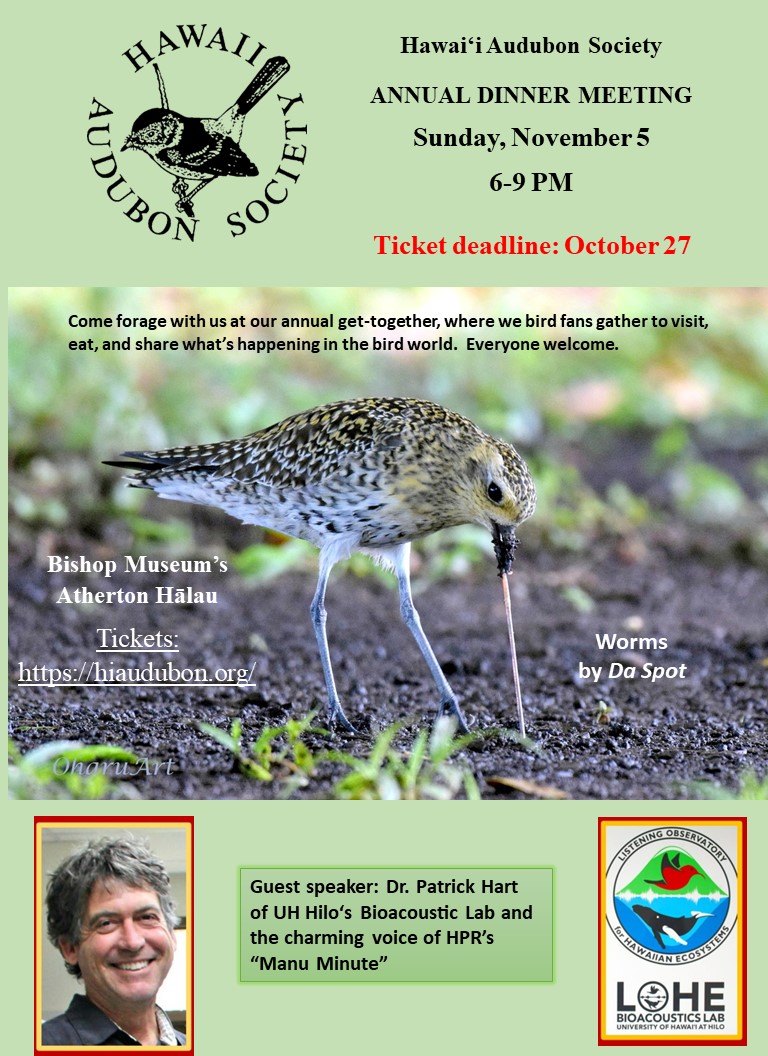

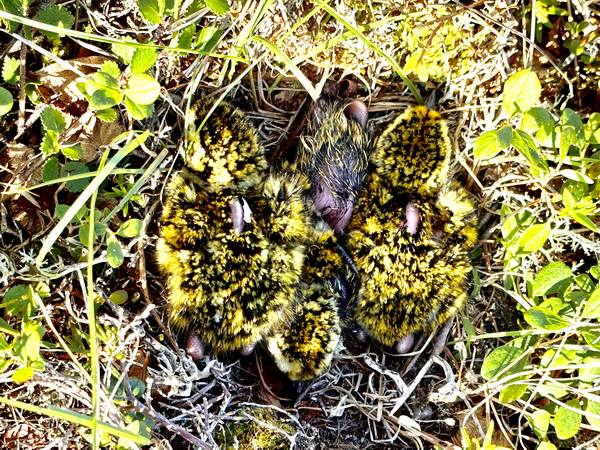
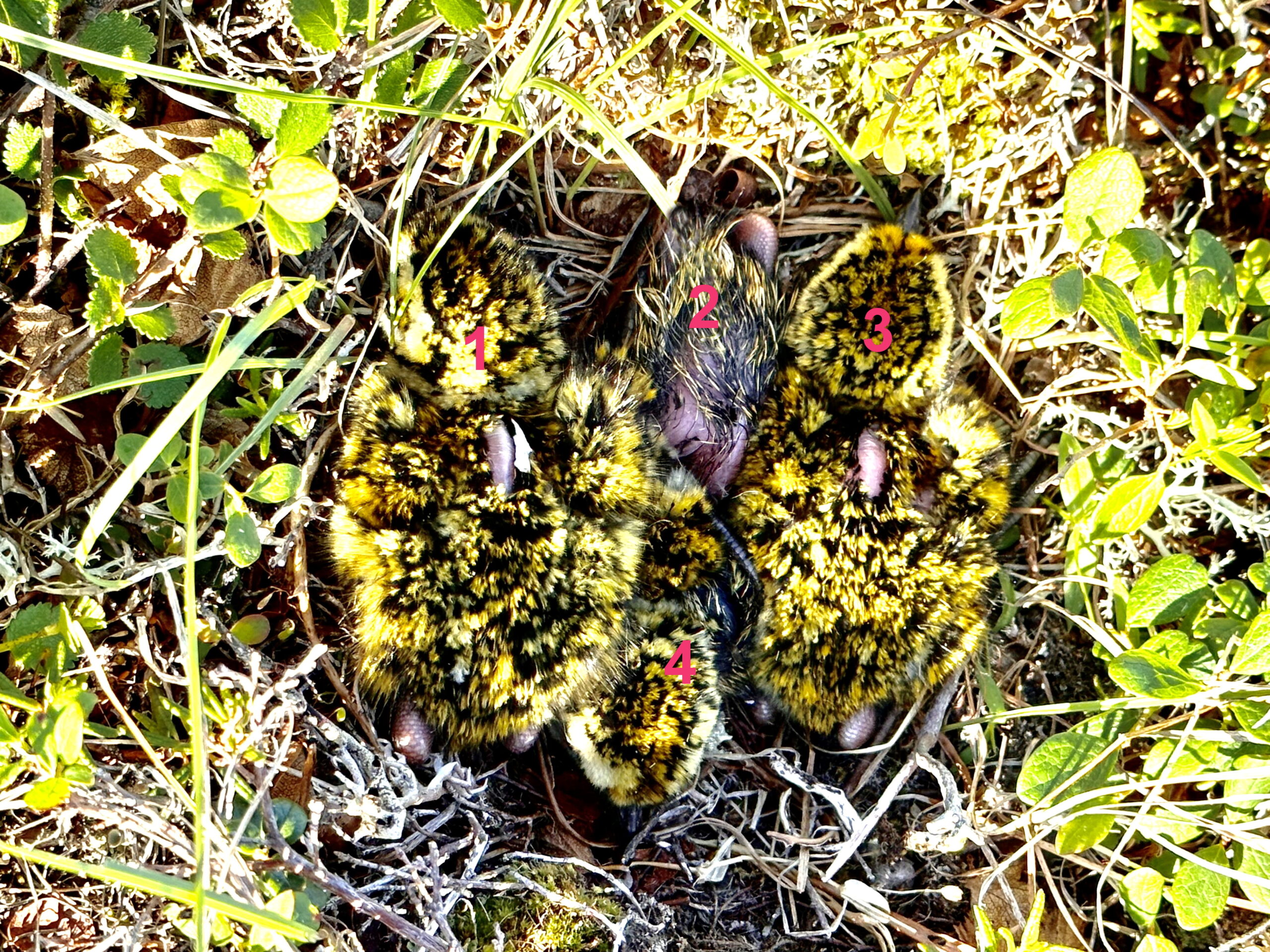 Chicks hatch in the order the female laid the eggs. The top center chick, still wet, was the last to hatch. The parents immediately pick up the empty eggshells and drop them far from the nest, since the white shell interiors are a visible clue to predators. The flesh-colored bumps are the chicks’ long, adult-size legs folded beneath them. ©Susan Scott
Chicks hatch in the order the female laid the eggs. The top center chick, still wet, was the last to hatch. The parents immediately pick up the empty eggshells and drop them far from the nest, since the white shell interiors are a visible clue to predators. The flesh-colored bumps are the chicks’ long, adult-size legs folded beneath them. ©Susan Scott 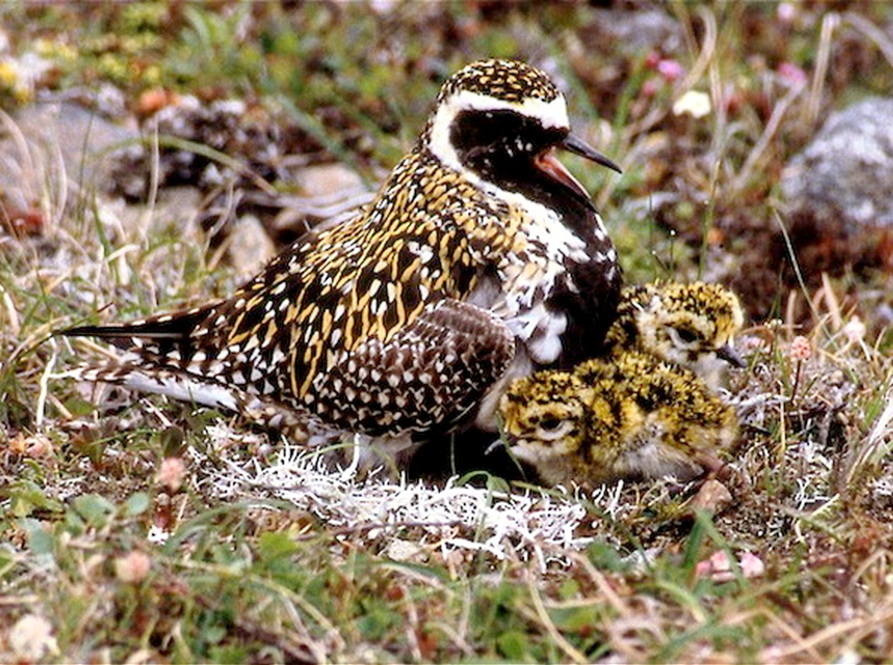 This photo from one of Wally’s past trips shows a male parent protecting his newly hatched offspring. © O.W. Johnson
This photo from one of Wally’s past trips shows a male parent protecting his newly hatched offspring. © O.W. Johnson 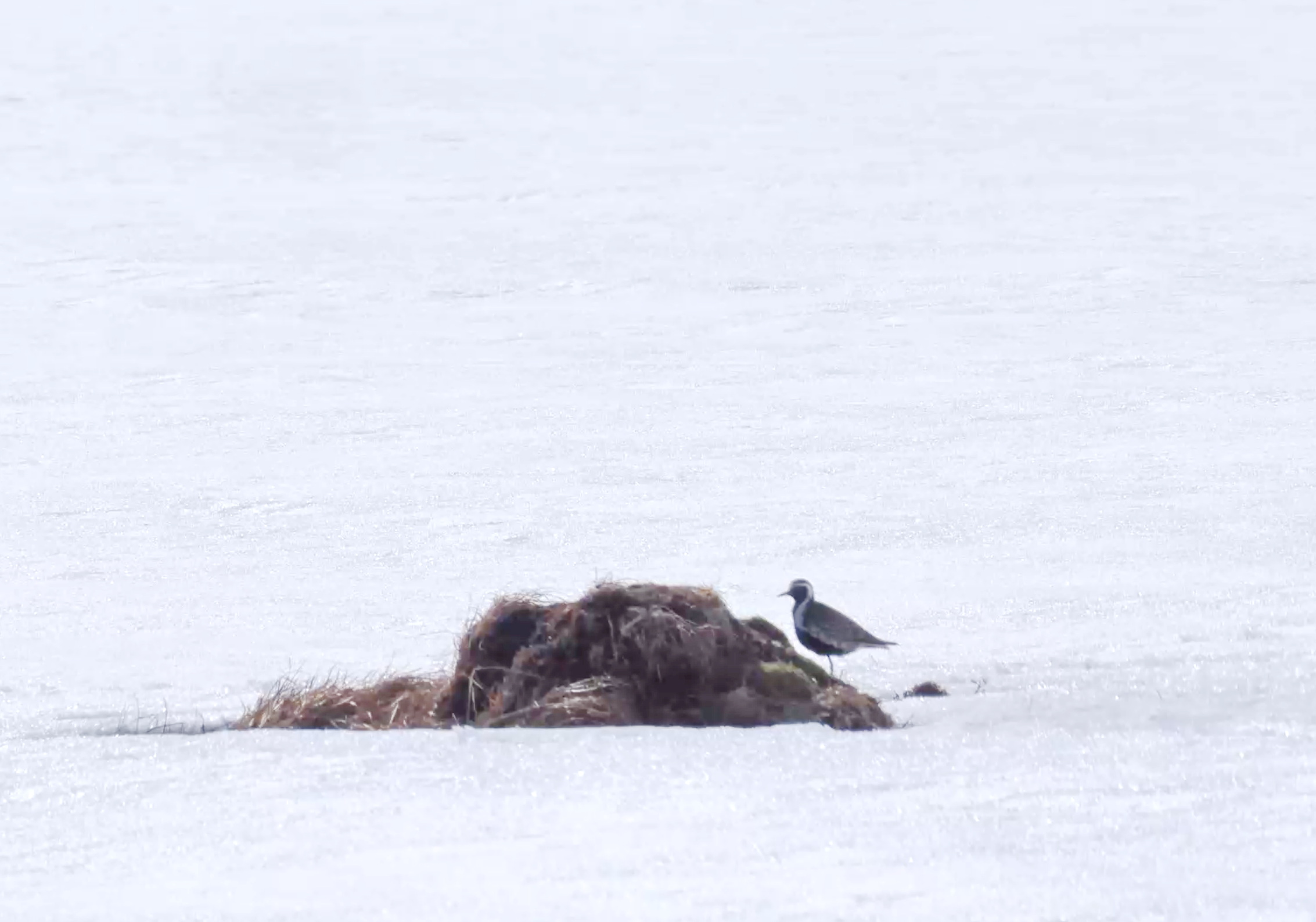 Late snowfall leaves little for newly arrived kōlea to eat. © Jim Dory
Late snowfall leaves little for newly arrived kōlea to eat. © Jim Dory 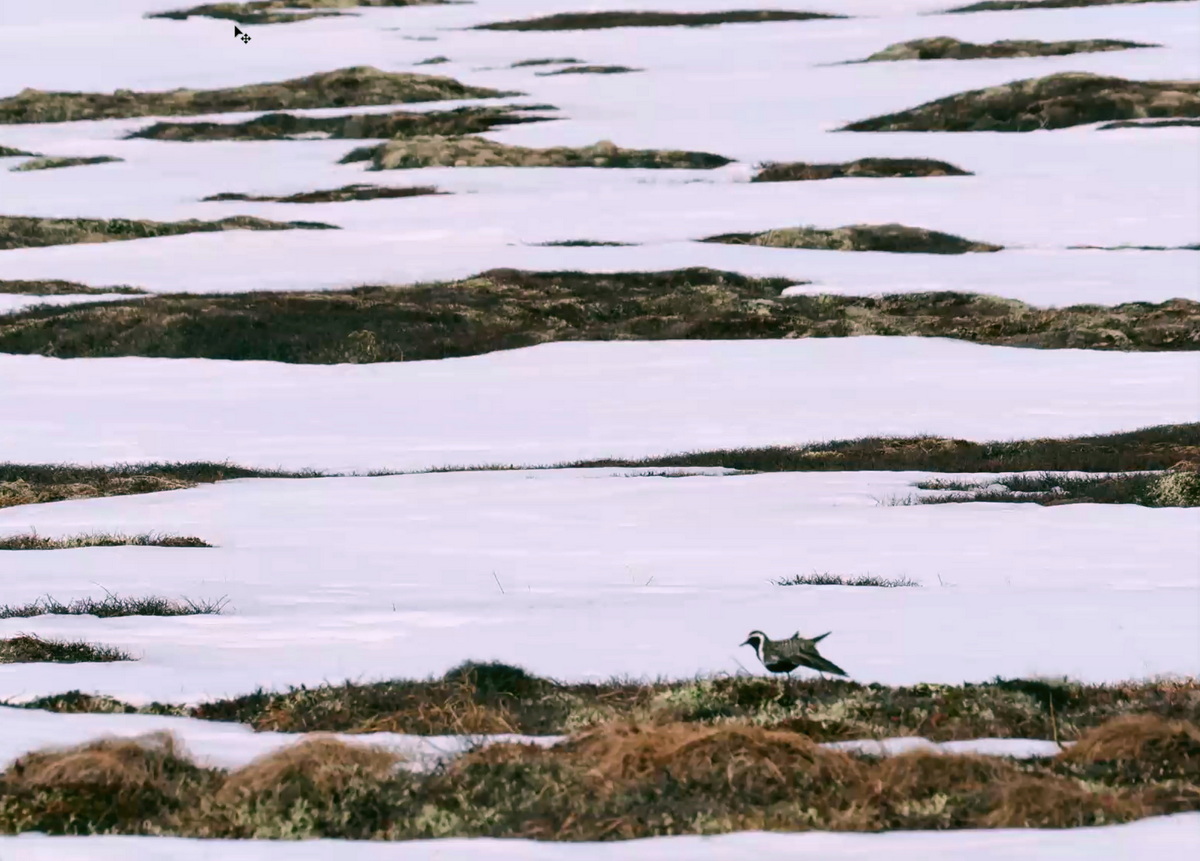 After their 3,000-mile nonstop flight, kōlea need nourishment fast. When mosquitoes and other insects hatch late due to cold weather, kōlea eat freeze-dried berries from the previous fall. © Jim Dory.
After their 3,000-mile nonstop flight, kōlea need nourishment fast. When mosquitoes and other insects hatch late due to cold weather, kōlea eat freeze-dried berries from the previous fall. © Jim Dory. 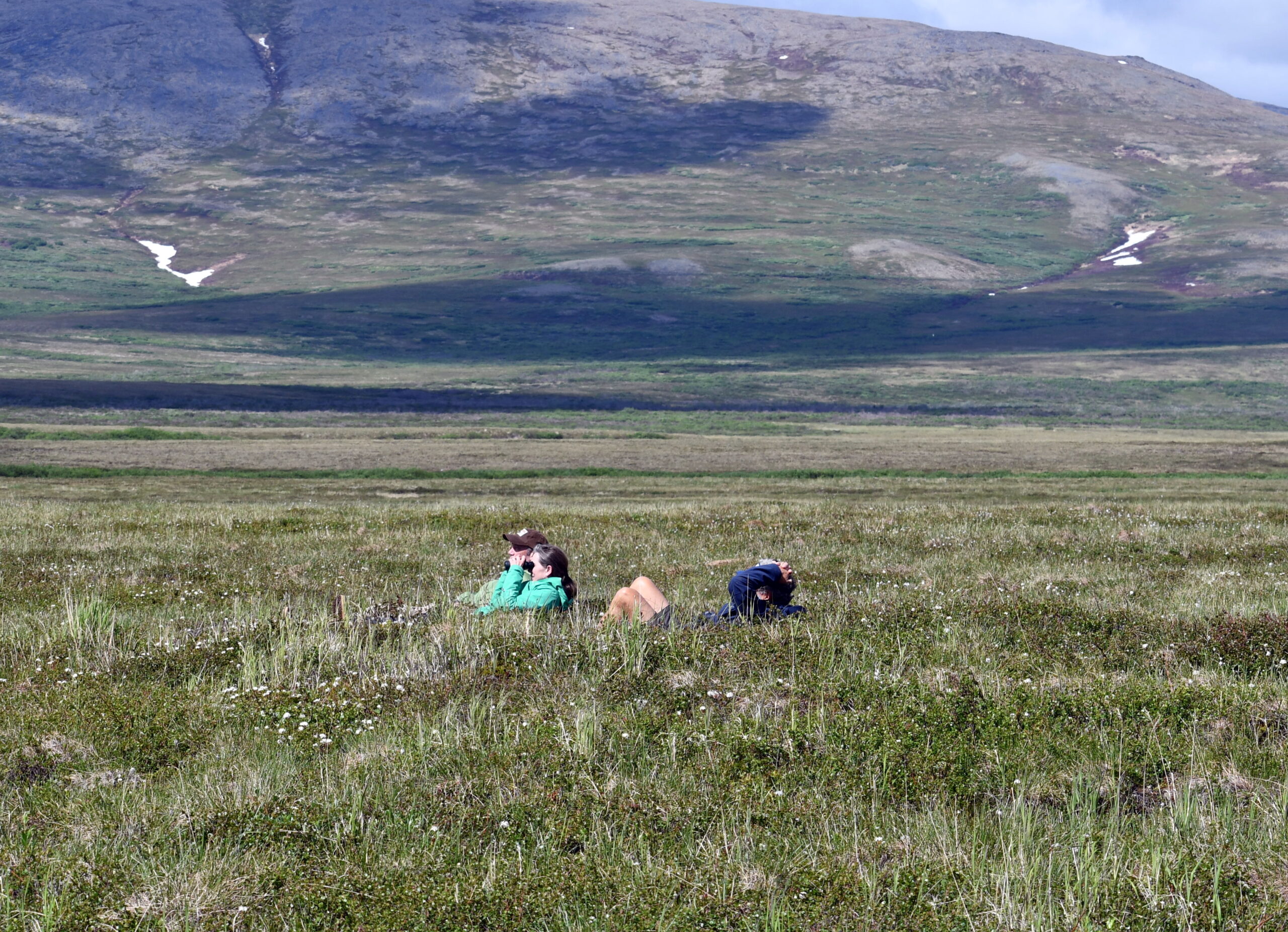 To find a nest in the vast tundra, Alaska researchers, Nancy and Paul Brusseau, watch where a flying kōlea landed. Craig Thomas (my husband) in shorts, works hard here supervising. ©Susan Scott
To find a nest in the vast tundra, Alaska researchers, Nancy and Paul Brusseau, watch where a flying kōlea landed. Craig Thomas (my husband) in shorts, works hard here supervising. ©Susan Scott 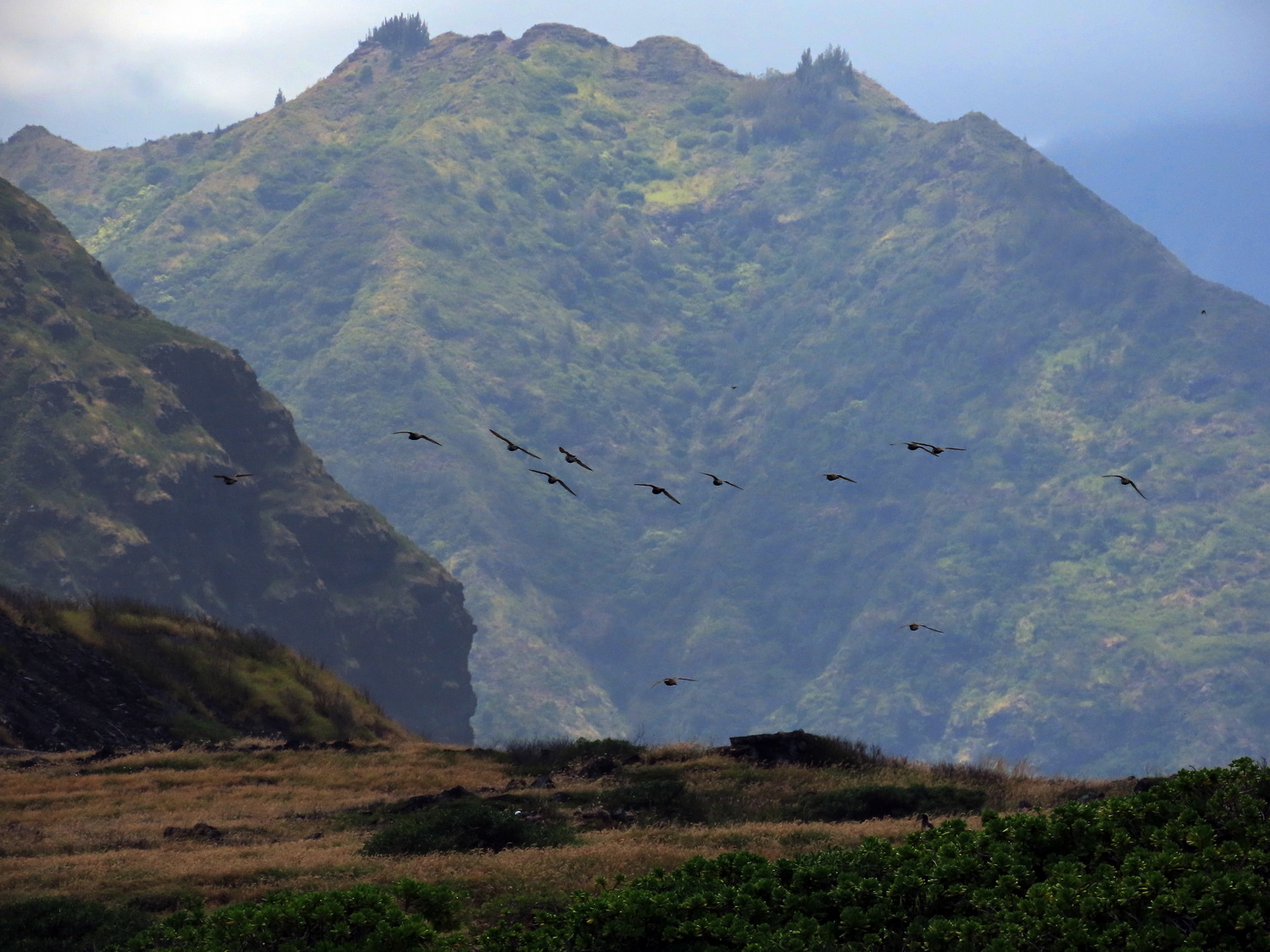
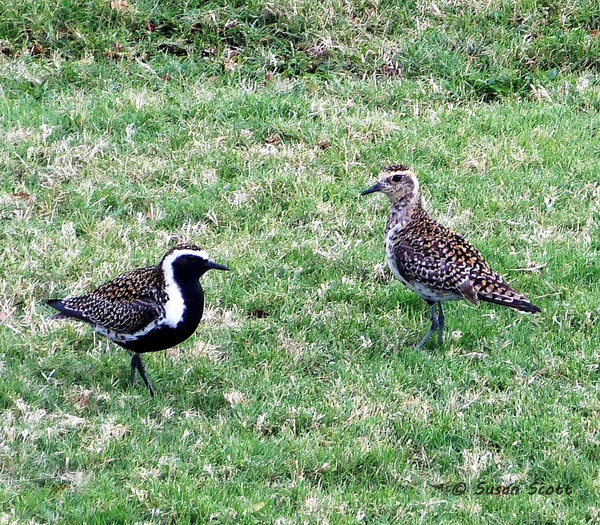 Our male, Jake, (left) usually defends his foraging territory from other birds but come April, he tolerates company, such as this attractive female. ©Susan Scott
Our male, Jake, (left) usually defends his foraging territory from other birds but come April, he tolerates company, such as this attractive female. ©Susan Scott  Plover fan, Roger Kobayashi, escorted me onto Ford Island (military ID required) to see the gathering near the NOAA building. ©Susan Scott
Plover fan, Roger Kobayashi, escorted me onto Ford Island (military ID required) to see the gathering near the NOAA building. ©Susan Scott 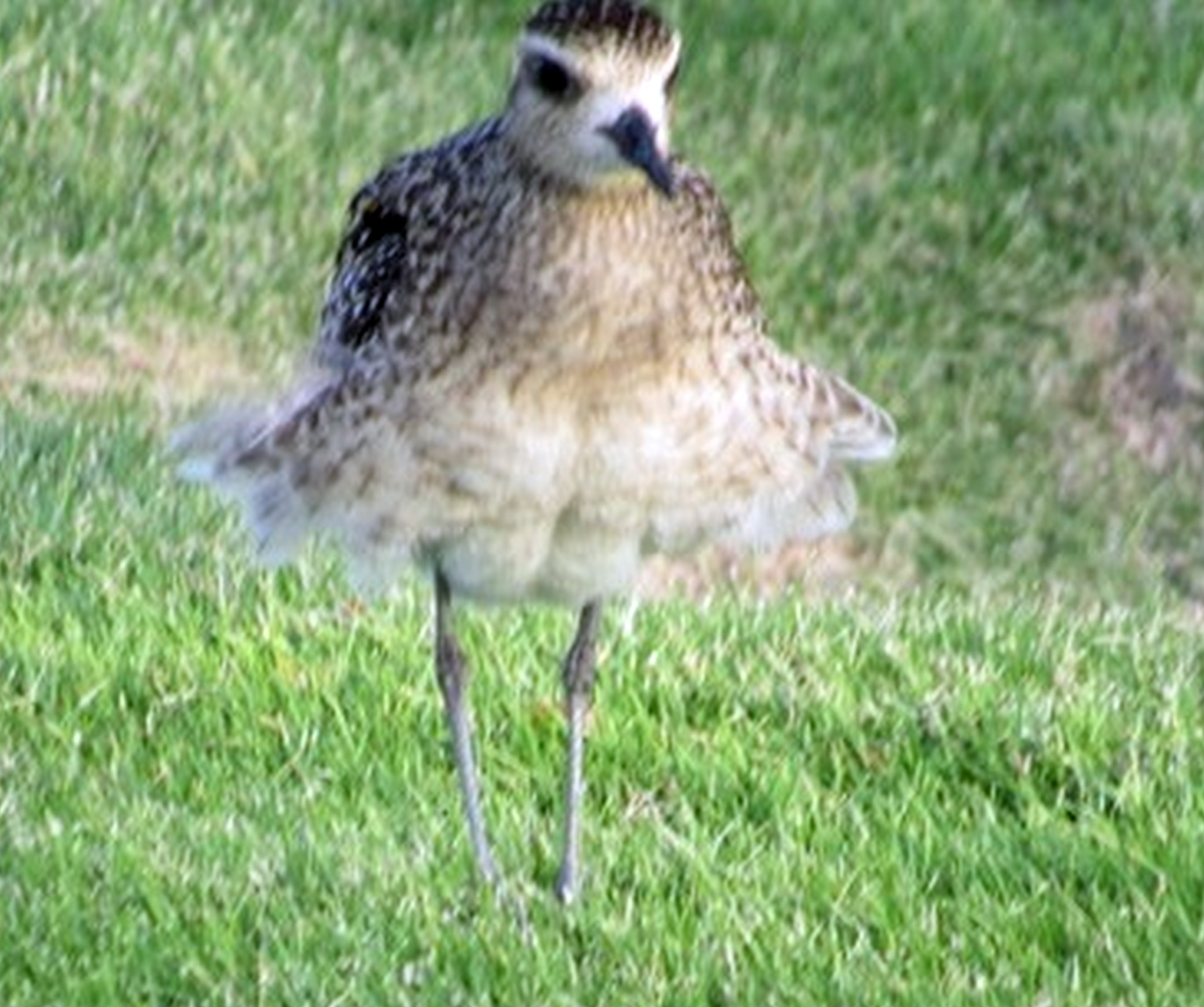 Hawaiʻi Audubon board member and kōlea fan, Pat Moriyasu, shot this funny photo of a kōleaʻs “skirt” during one of our blustery days in early March.
Hawaiʻi Audubon board member and kōlea fan, Pat Moriyasu, shot this funny photo of a kōleaʻs “skirt” during one of our blustery days in early March. 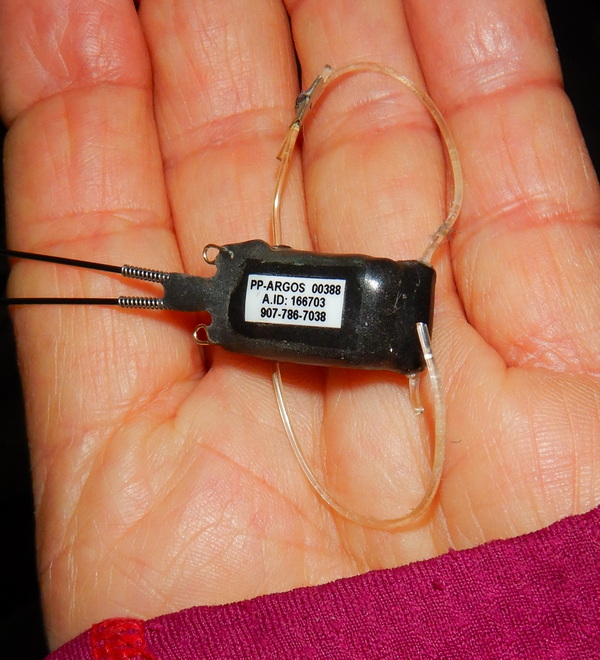
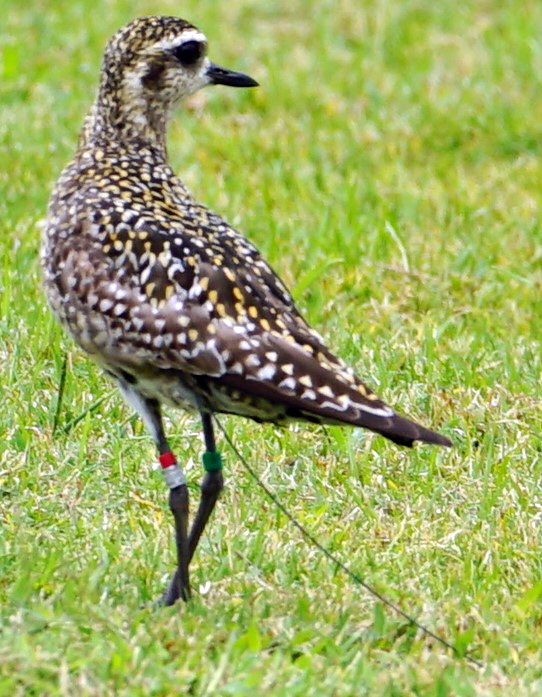
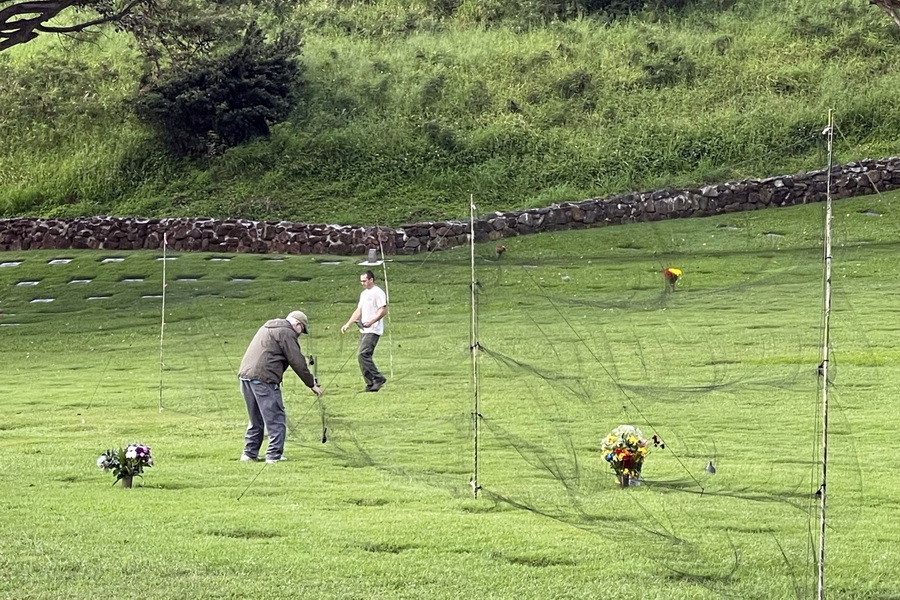
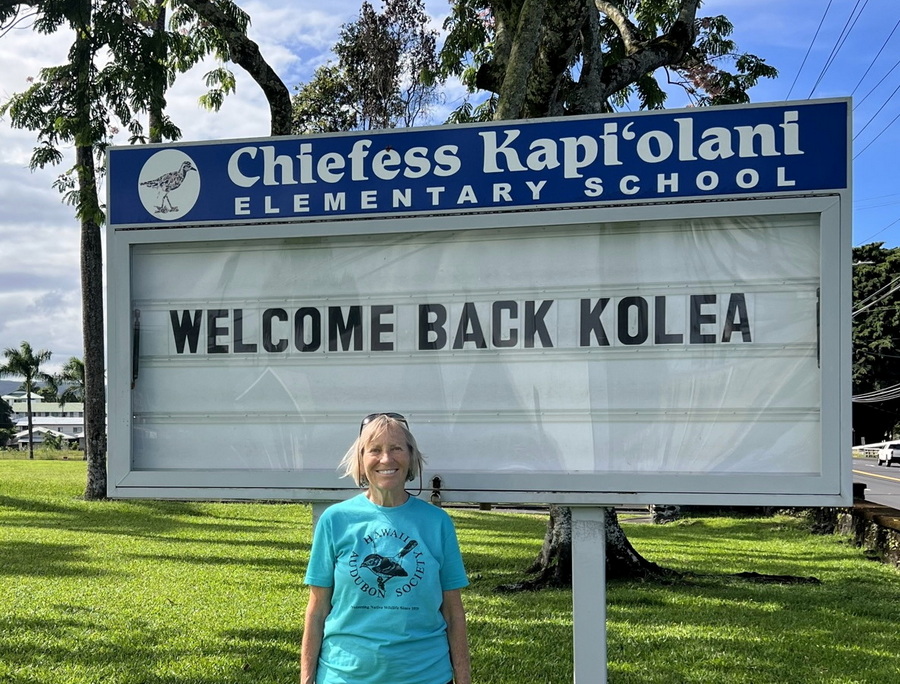
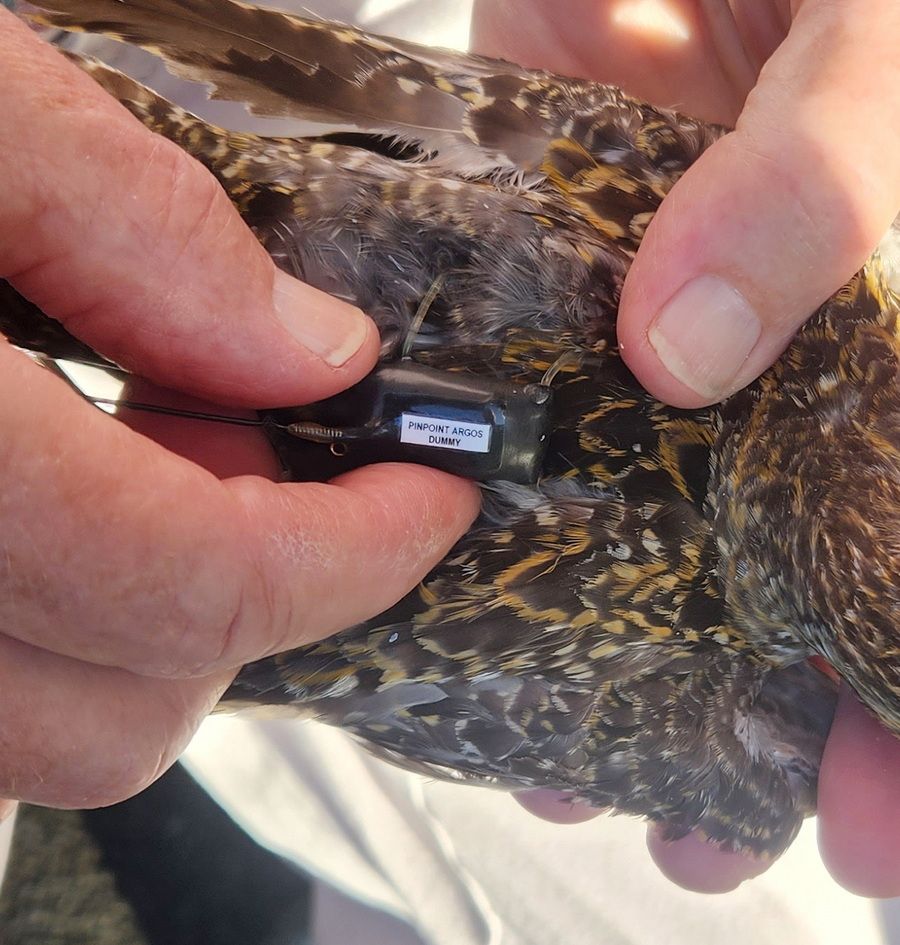 This bird carried, round trip, a GPS tag labeled DUMMY. It was the same weight and size as the live tags, but did not transmit a signal. ©Susan Scott
This bird carried, round trip, a GPS tag labeled DUMMY. It was the same weight and size as the live tags, but did not transmit a signal. ©Susan Scott 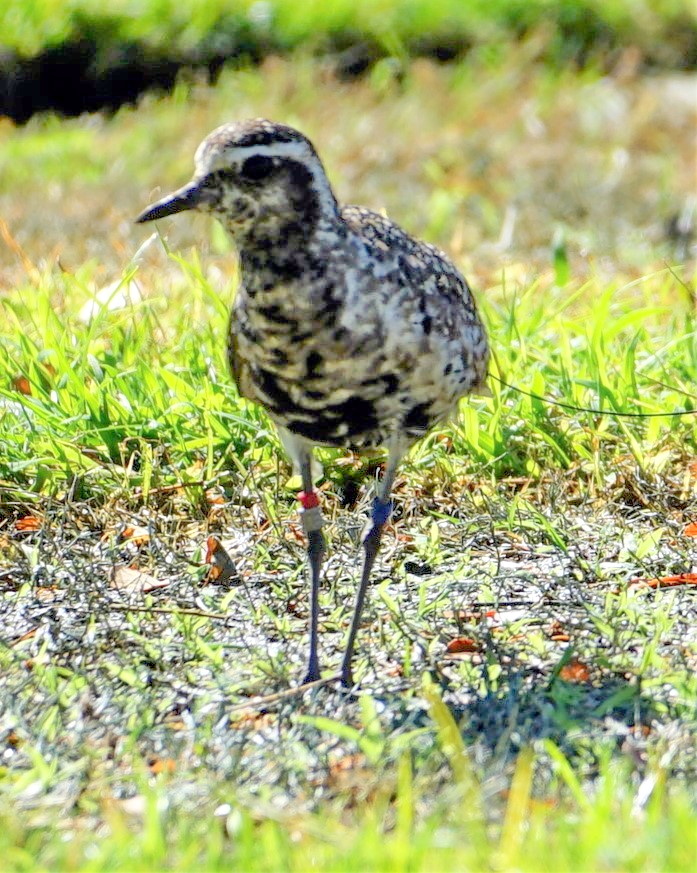 This male, nicknamed Mr. Necker, flew to Alaska, then Russia, then to Necker Island in the Papahanaumokuakea Marine National Monument where his signal stopped. The team was surprised and delighted to recapture him in Punchbowl Cemetery on October 10th in the exact spot he was tagged in March. We know the bird’s sex from his springtime feather colors, not his above October colors. ©Susan Scott
This male, nicknamed Mr. Necker, flew to Alaska, then Russia, then to Necker Island in the Papahanaumokuakea Marine National Monument where his signal stopped. The team was surprised and delighted to recapture him in Punchbowl Cemetery on October 10th in the exact spot he was tagged in March. We know the bird’s sex from his springtime feather colors, not his above October colors. ©Susan Scott 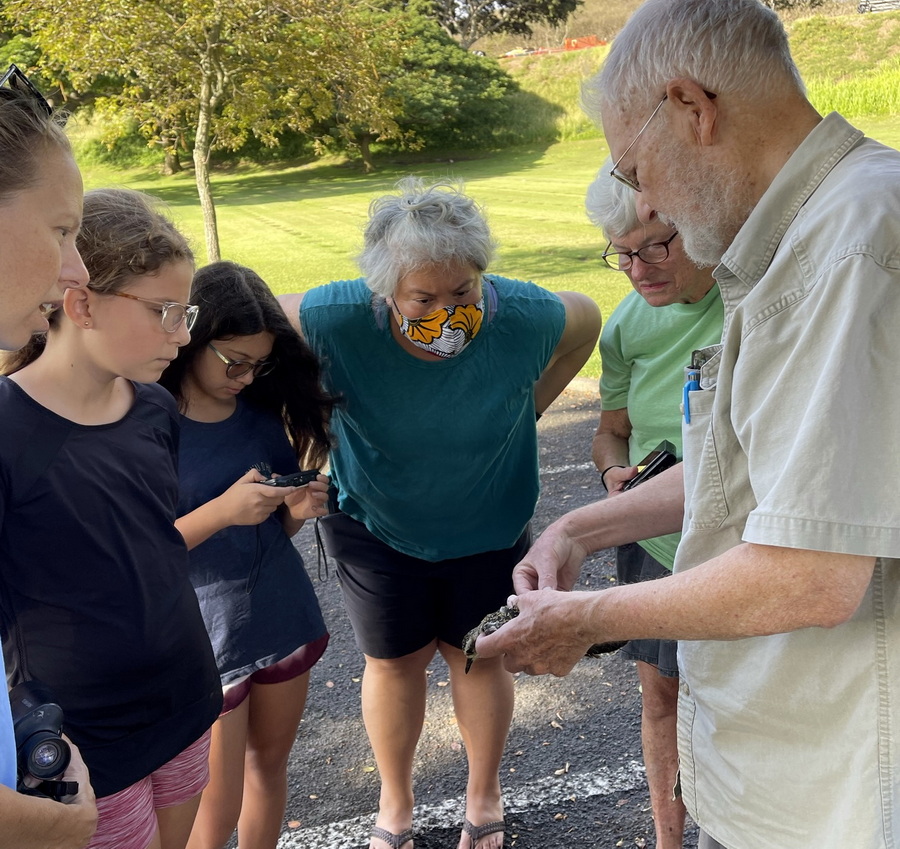 A large part, and purpose, of Kōlea research is teaching. Here’s Wally shows volunteers and students a recaptured plover’s flight feathers. ©Susan Scott
A large part, and purpose, of Kōlea research is teaching. Here’s Wally shows volunteers and students a recaptured plover’s flight feathers. ©Susan Scott 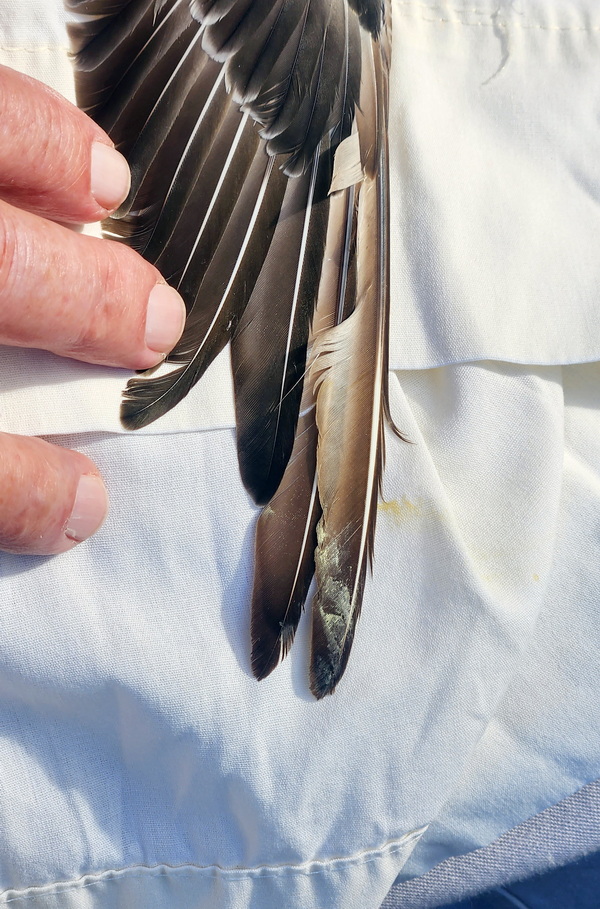 Wally shows volunteers and students the wear on a kōlea’s flight feathers. The bird will drop these hard-used feathers and grow new ones, but gradually, so as to not lose its ability to fly. ©Susan Scott
Wally shows volunteers and students the wear on a kōlea’s flight feathers. The bird will drop these hard-used feathers and grow new ones, but gradually, so as to not lose its ability to fly. ©Susan Scott 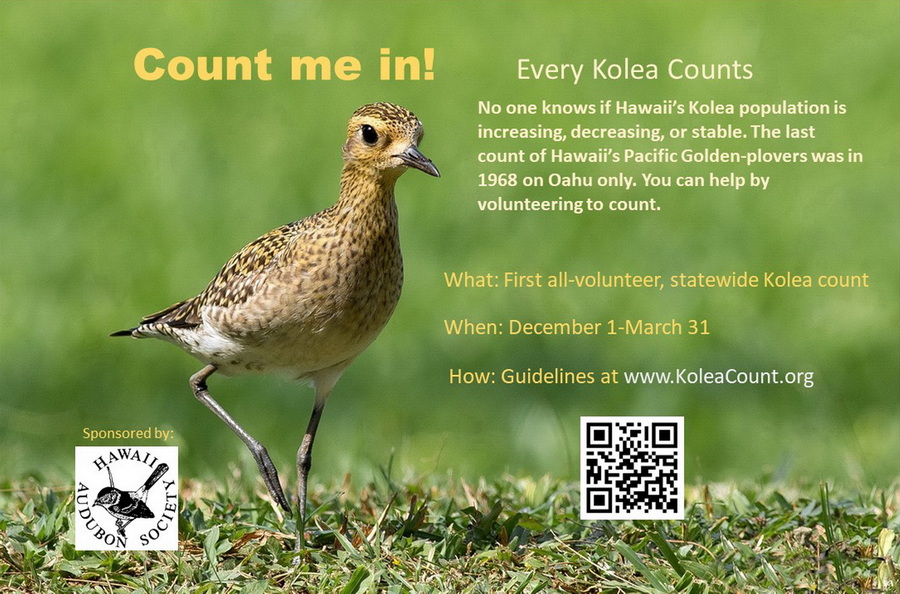
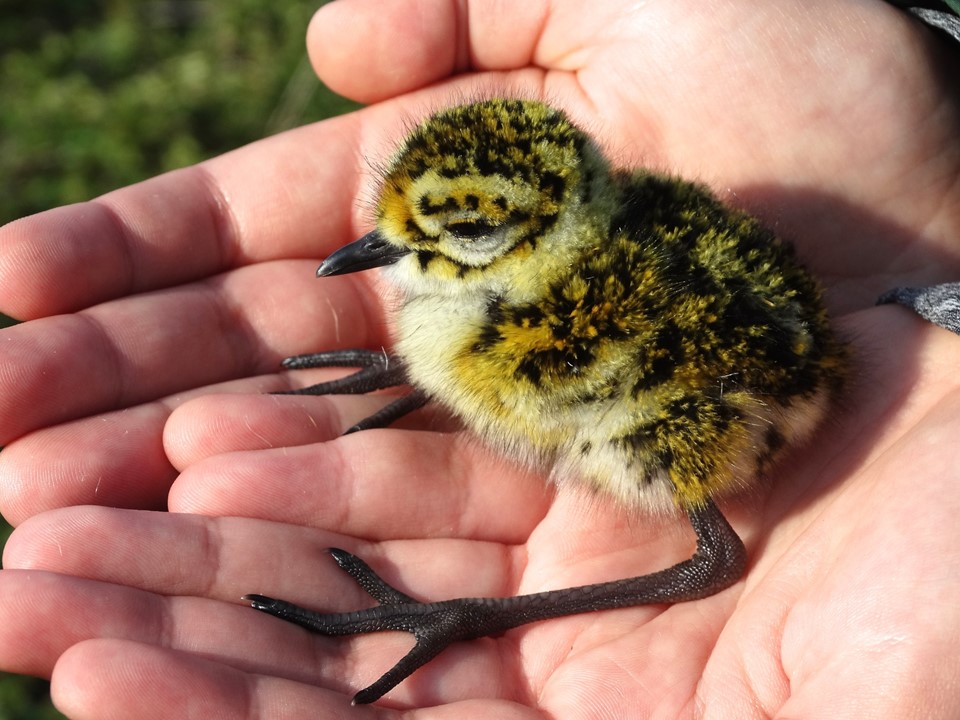 Birdy Big Foot: Kōlea chicks hatch with adult-sized feet and legs, and can fly in about a month. This chick is on the tundra near Nome, Alaska. © Oscar W. Johnson.
Birdy Big Foot: Kōlea chicks hatch with adult-sized feet and legs, and can fly in about a month. This chick is on the tundra near Nome, Alaska. © Oscar W. Johnson.  T-shirts available at hiaudubon.org.
T-shirts available at hiaudubon.org. 
 Kōlea pick bugs from Astroturf and bathe in hotel swimming pools. Kauai. ©Susan Scott
Kōlea pick bugs from Astroturf and bathe in hotel swimming pools. Kauai. ©Susan Scott  Punchbowl Cemetery, Oahu’s Kōlea lab. © Sigrid Southworth (our Punchbowl Kōlea counter.)
Punchbowl Cemetery, Oahu’s Kōlea lab. © Sigrid Southworth (our Punchbowl Kōlea counter.)